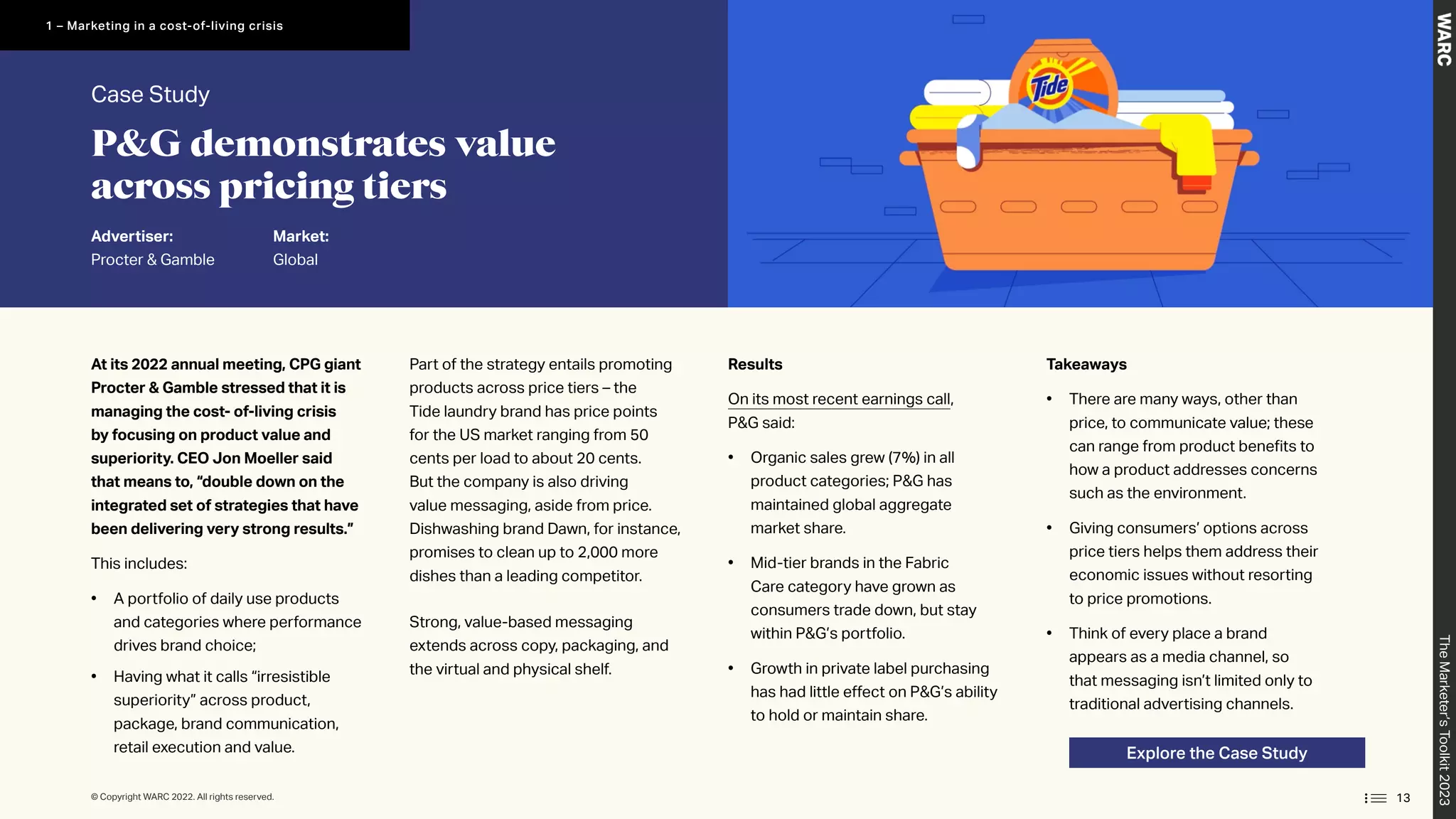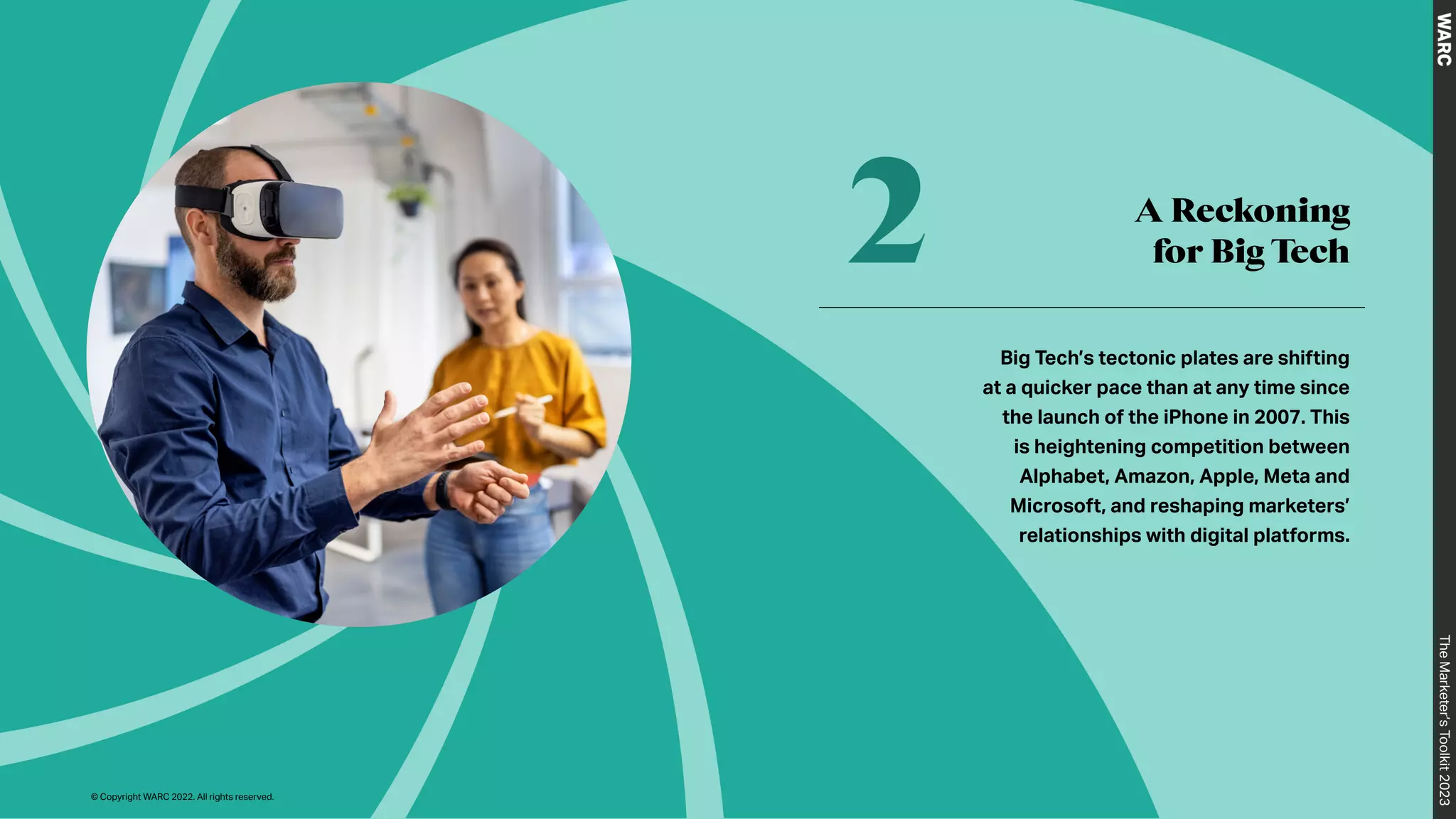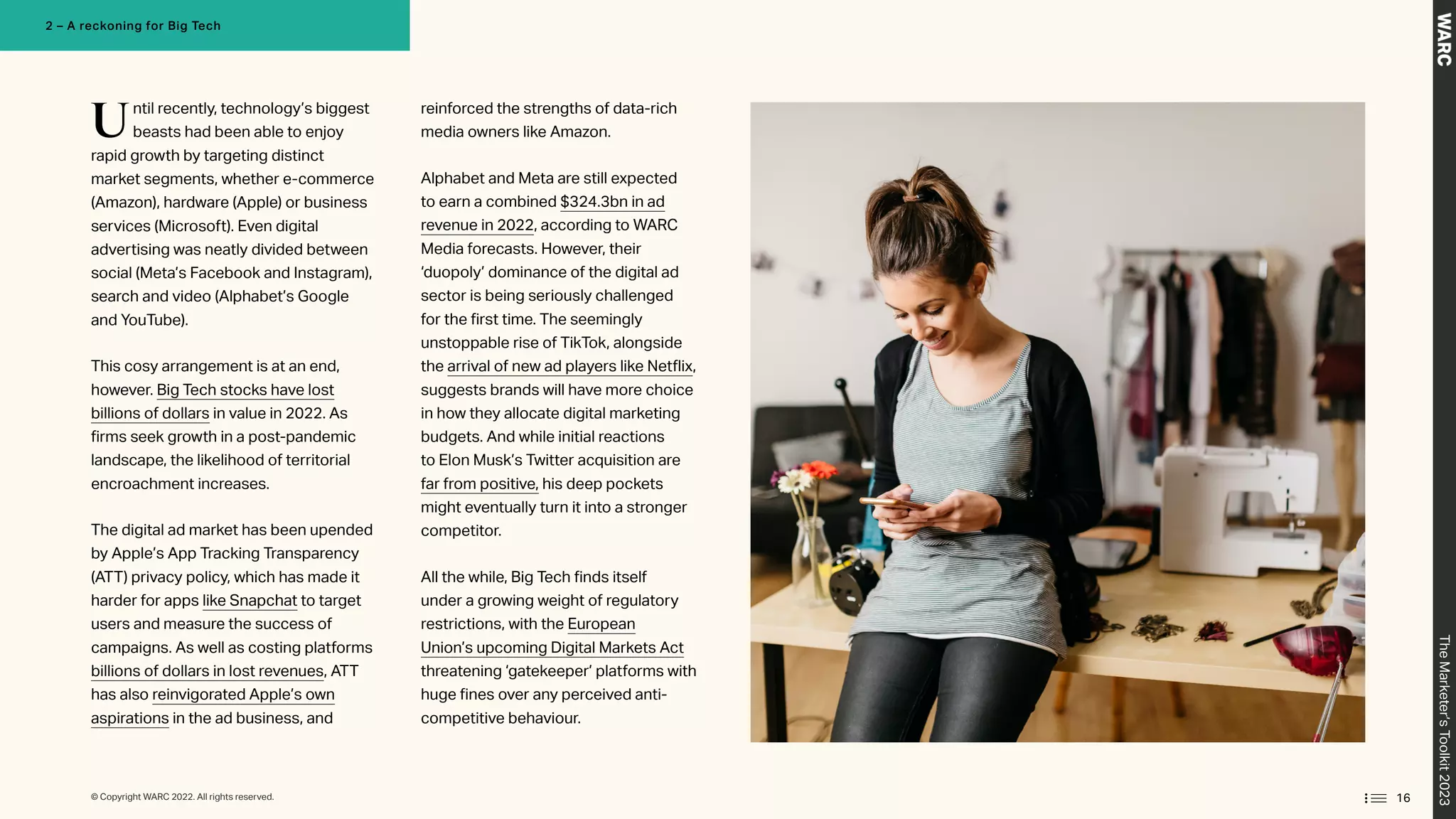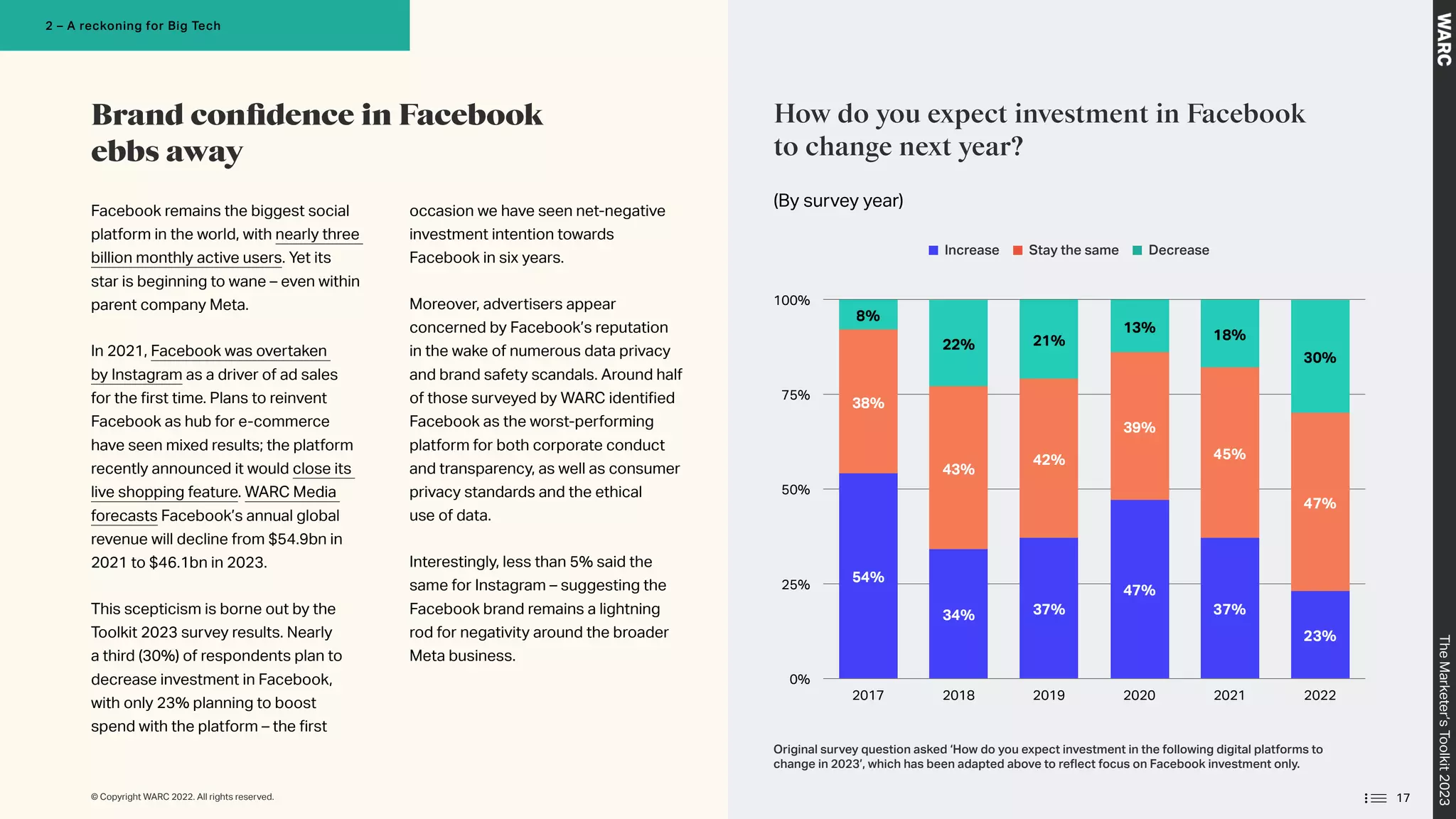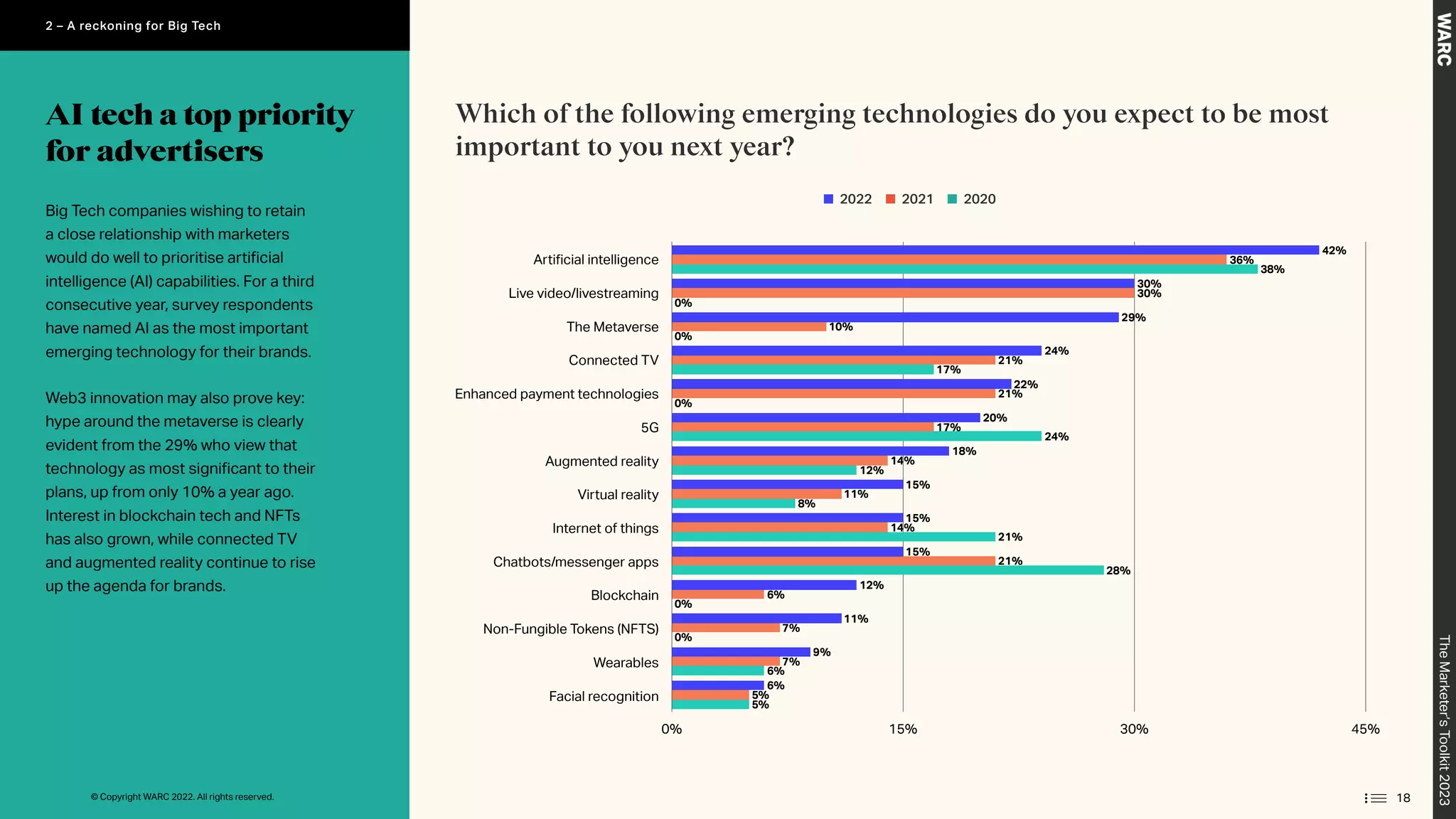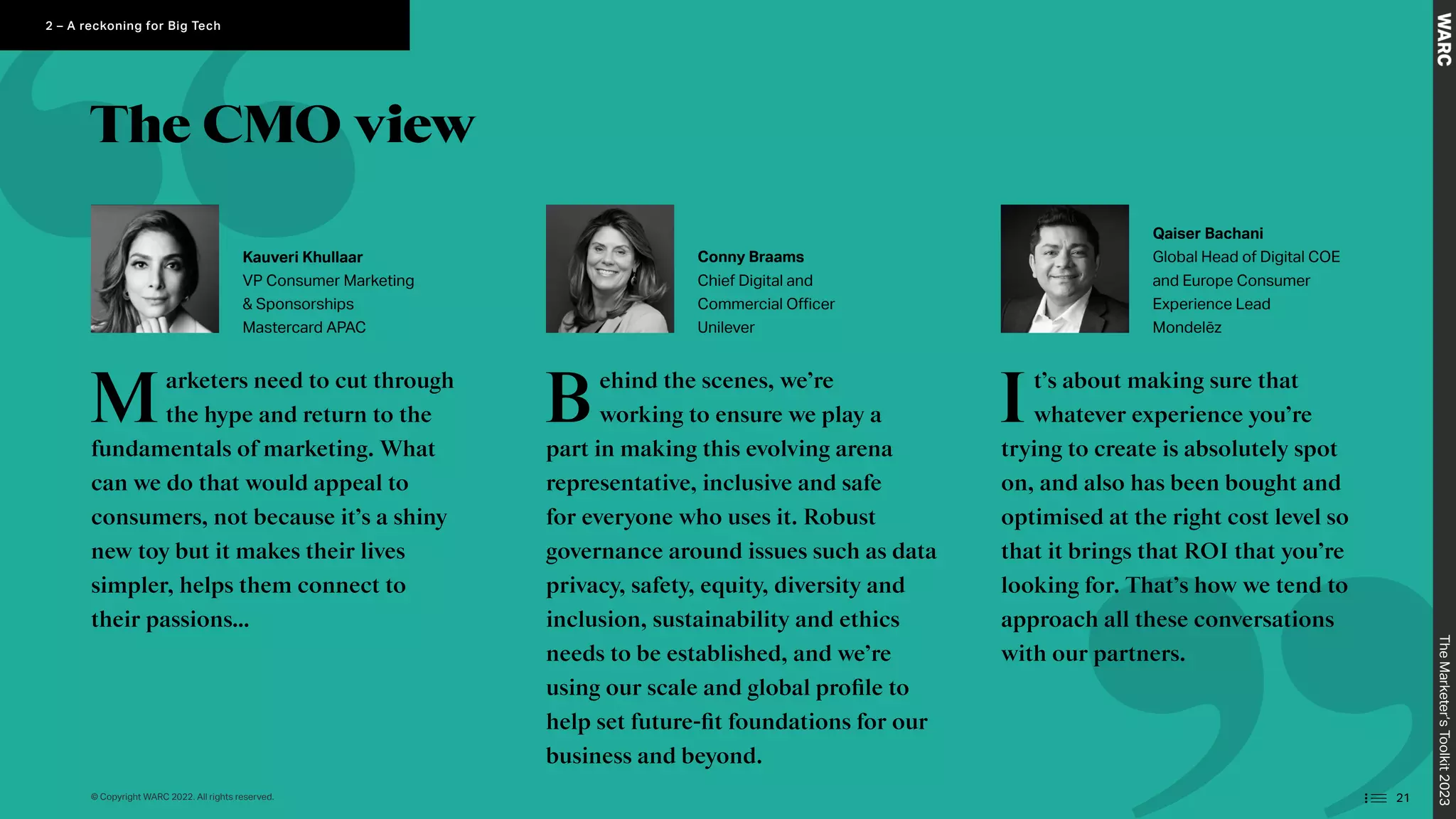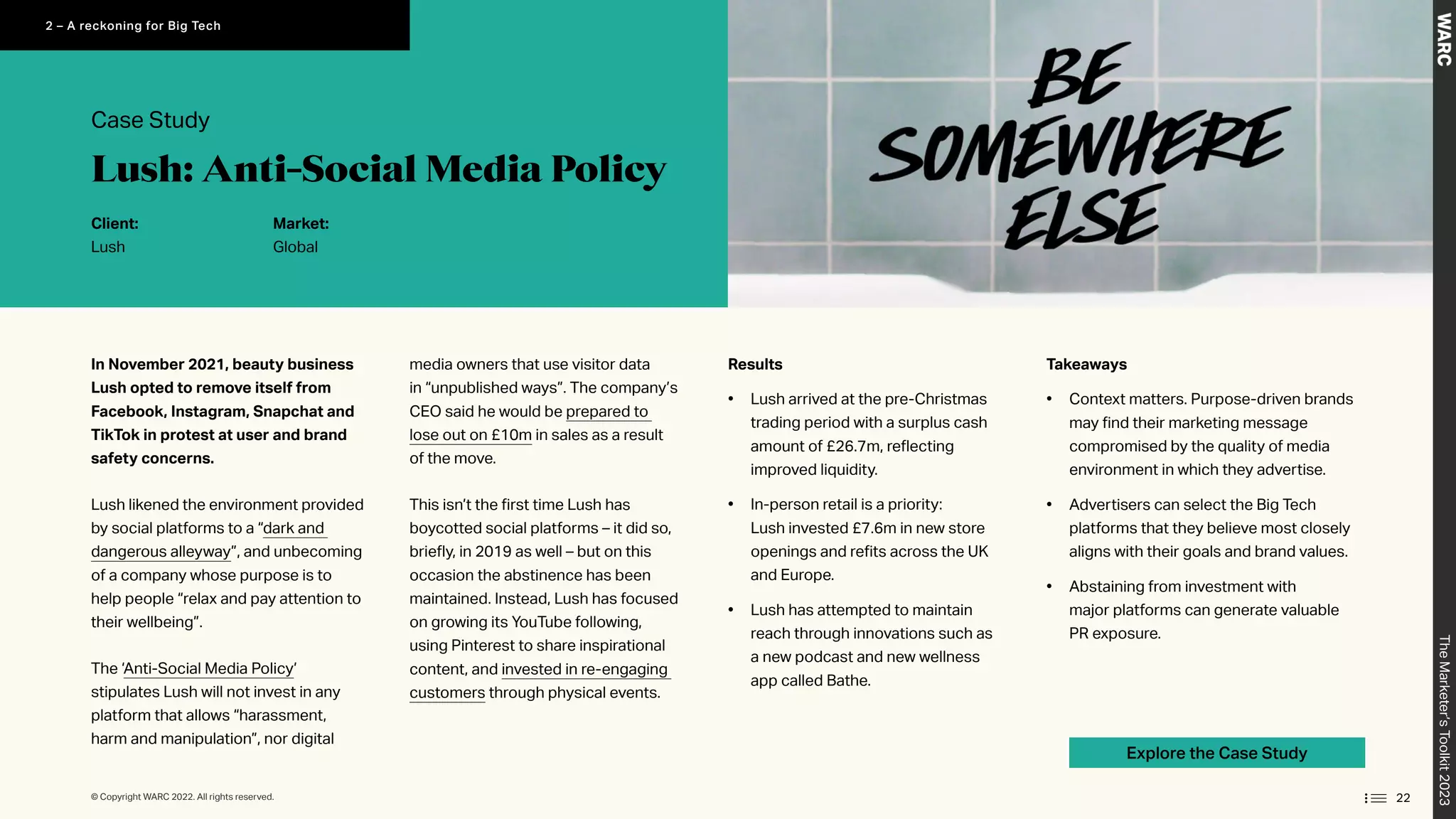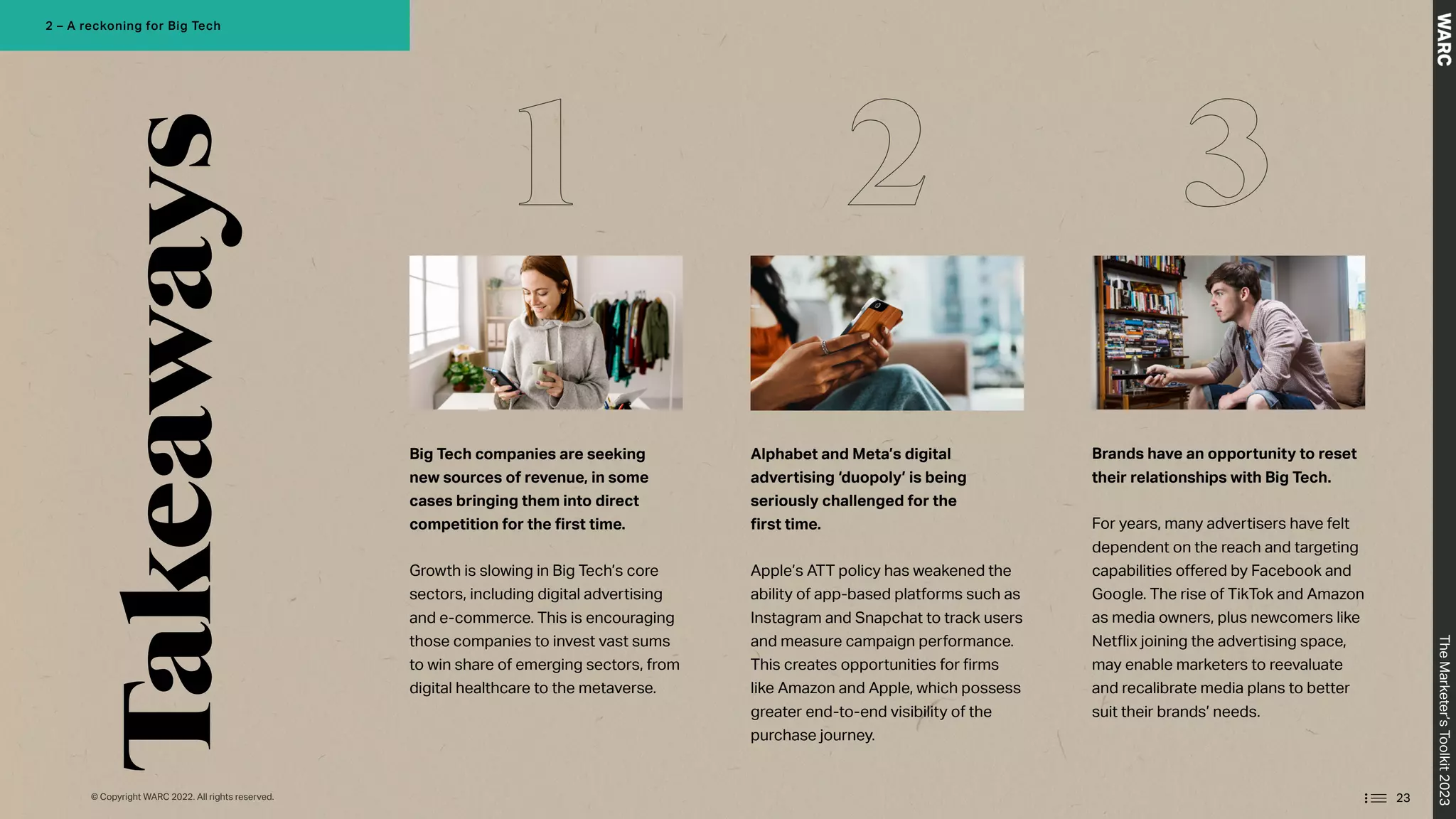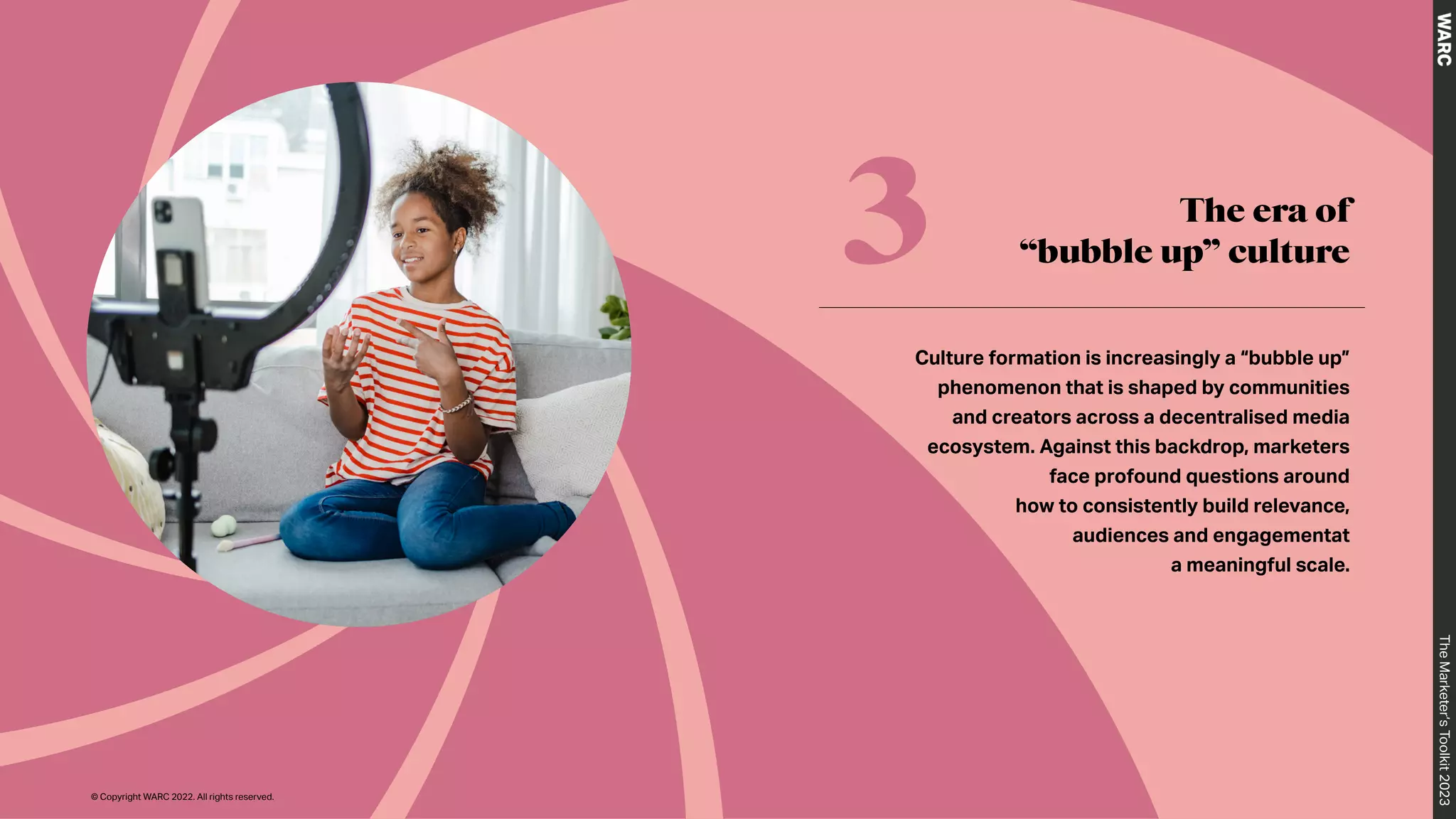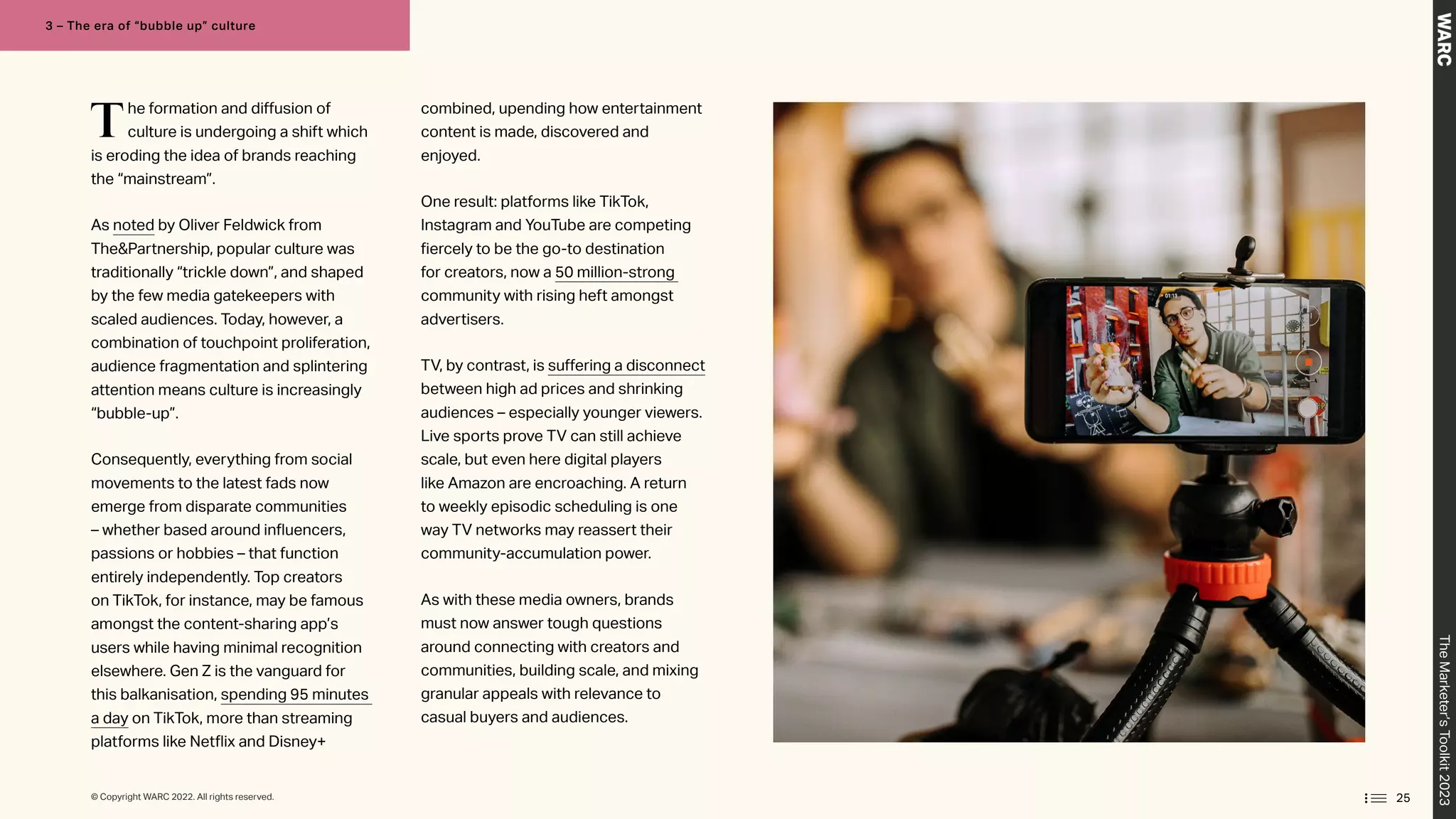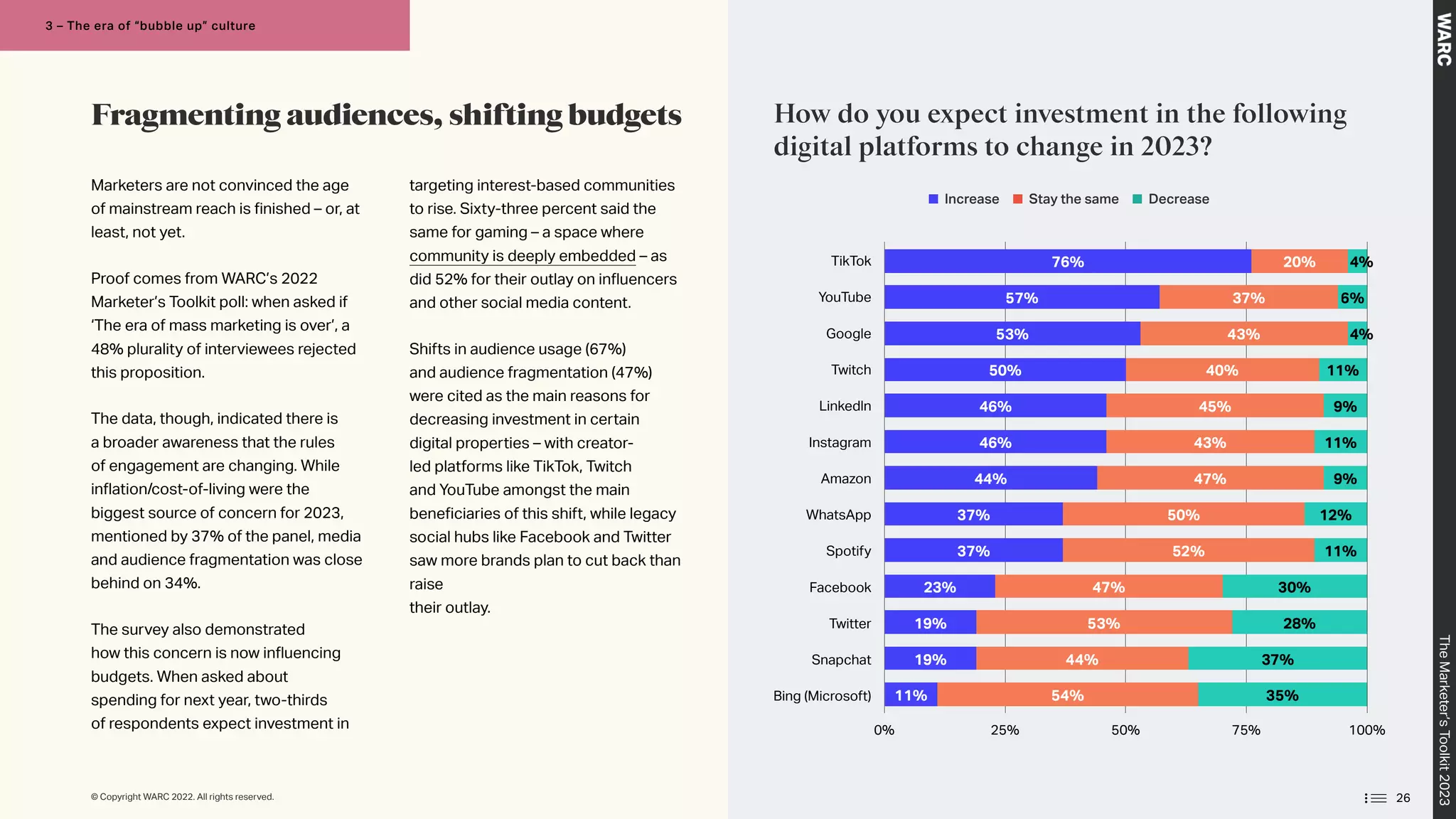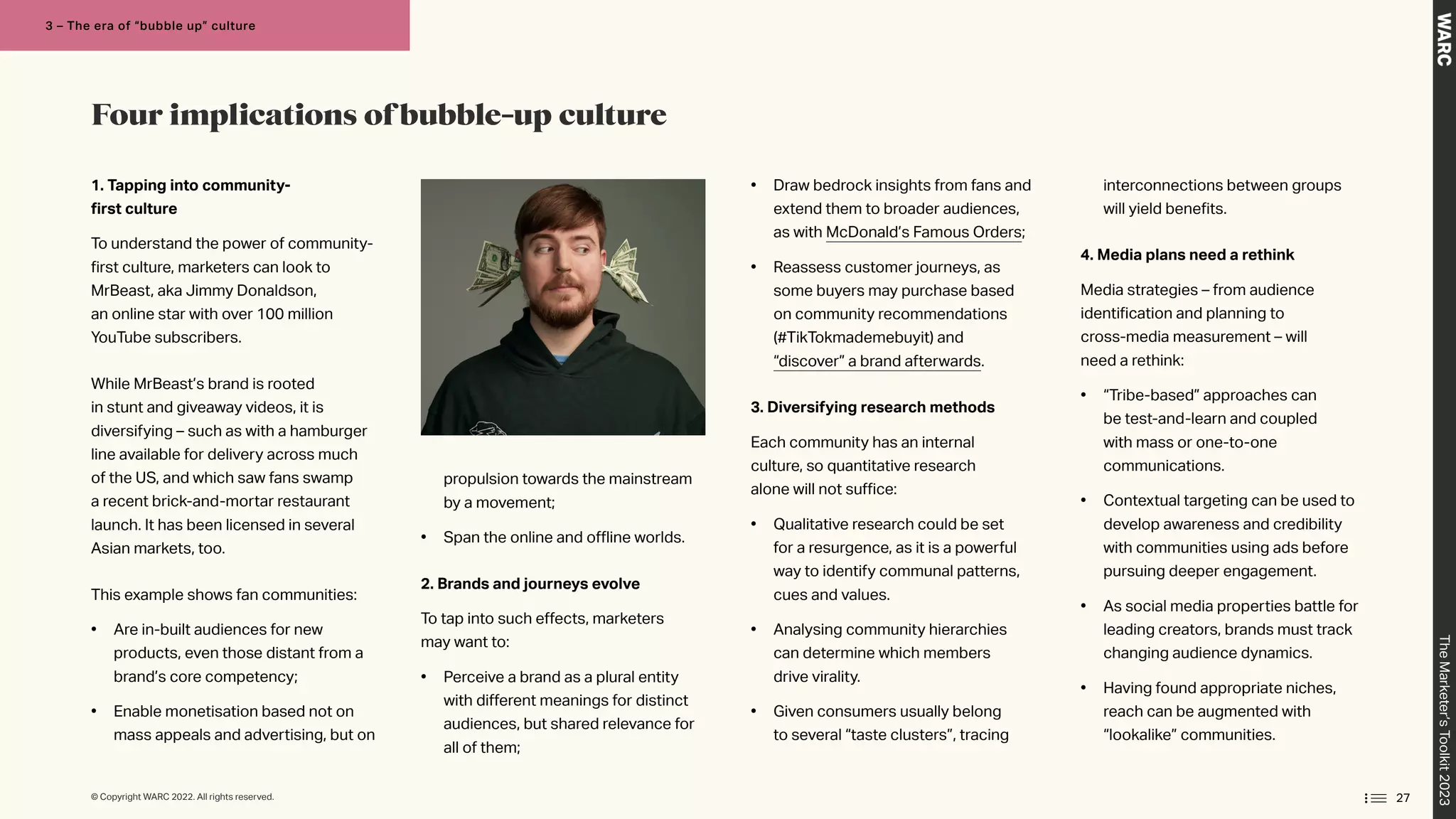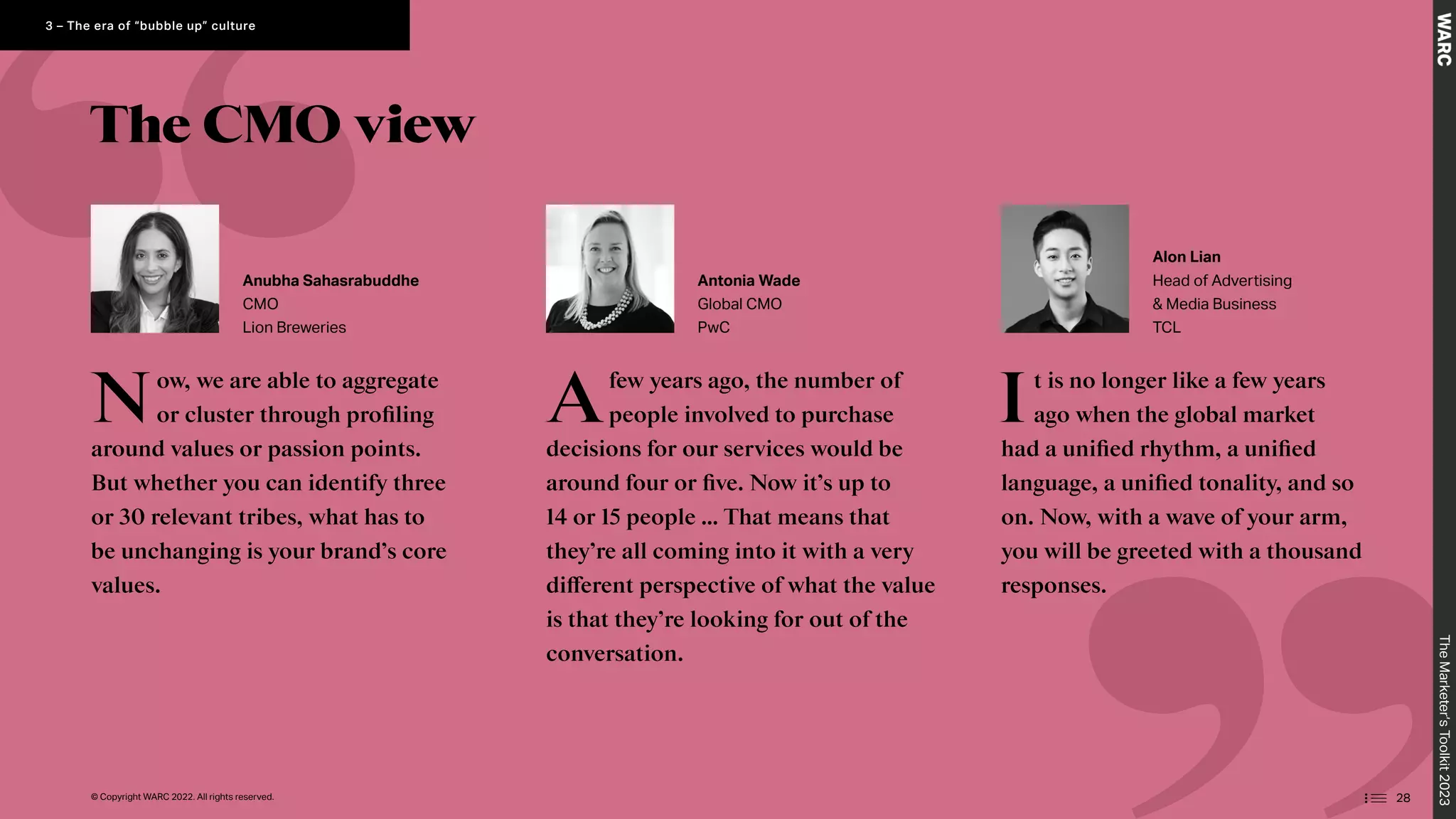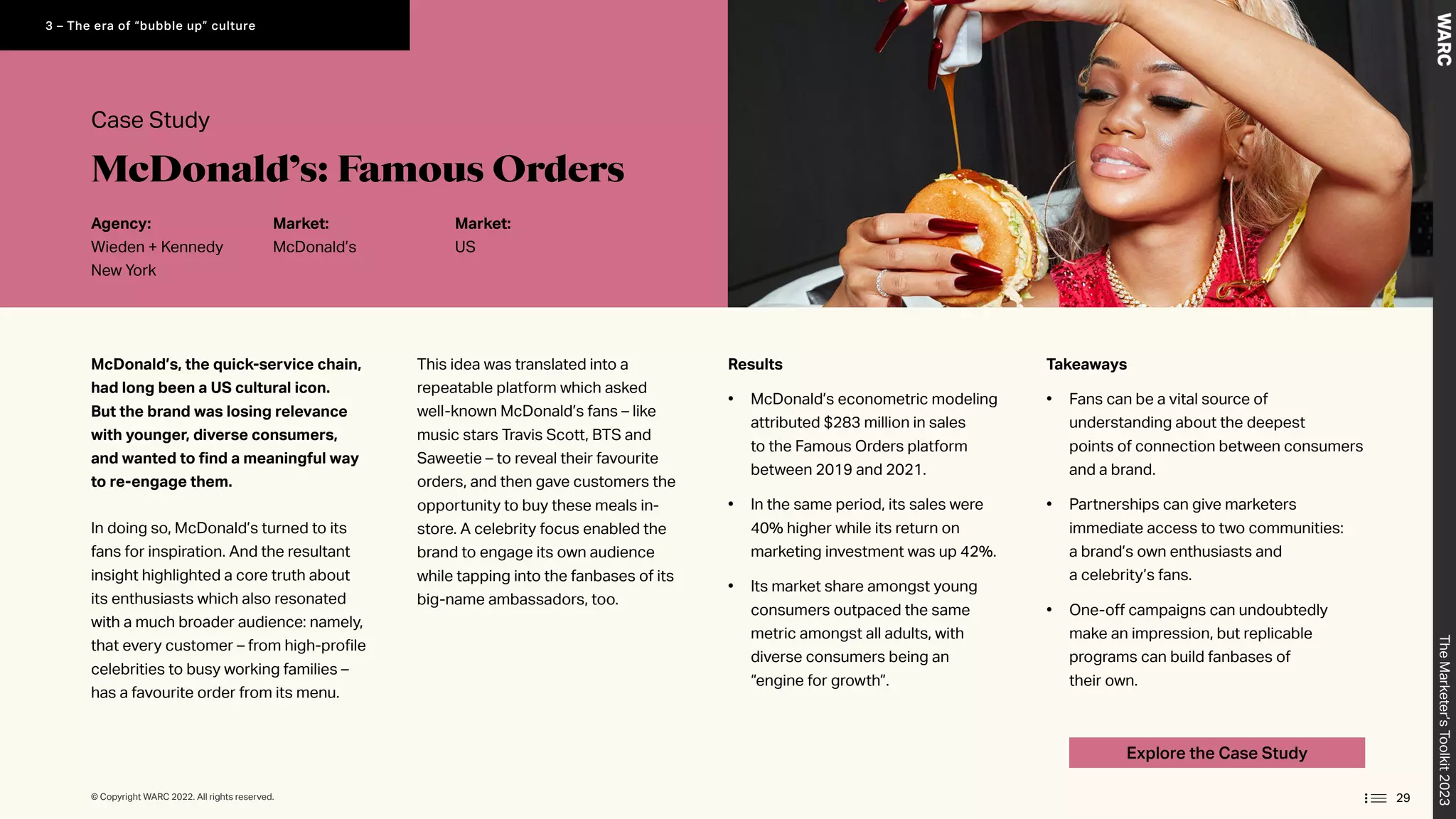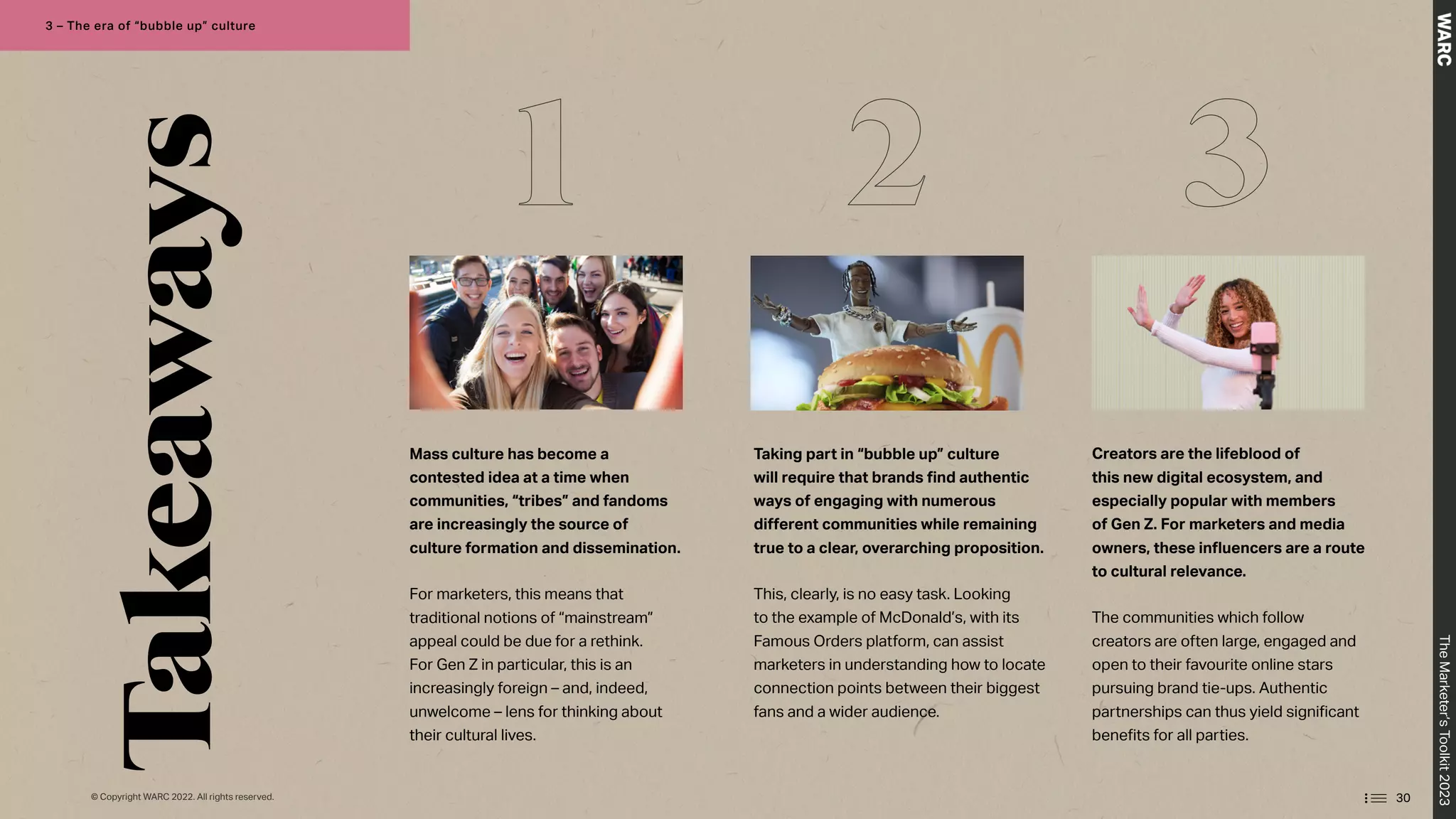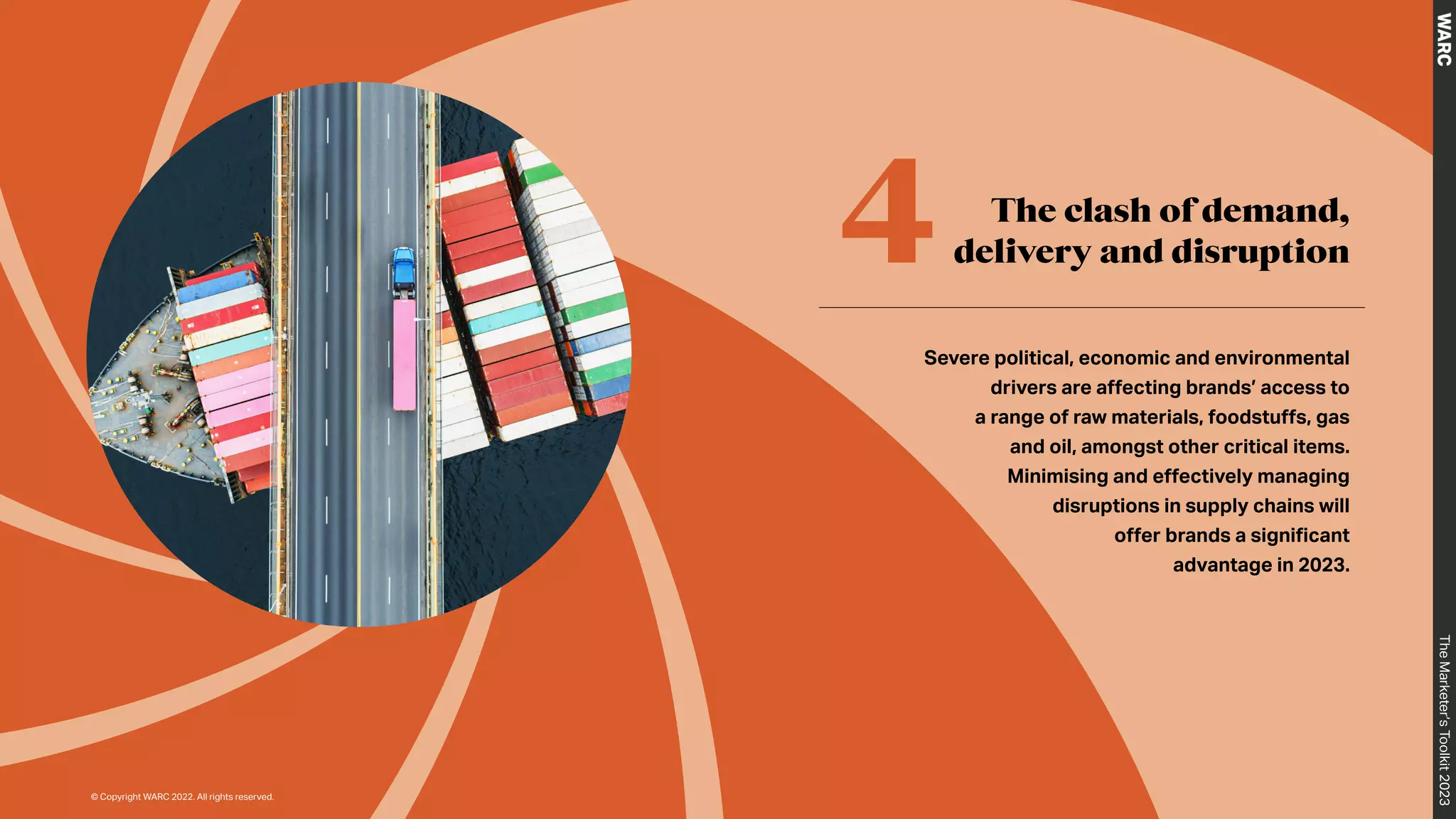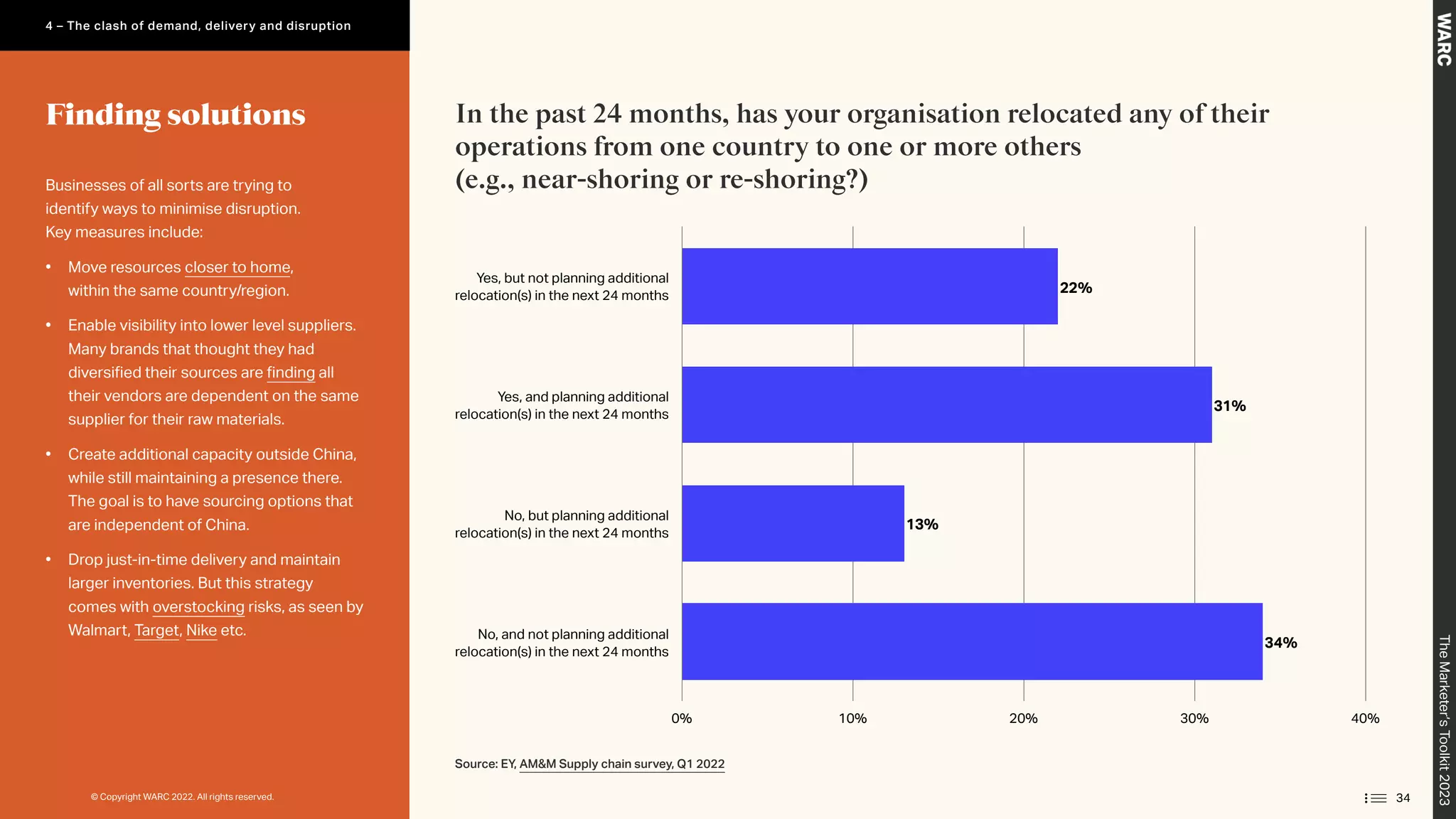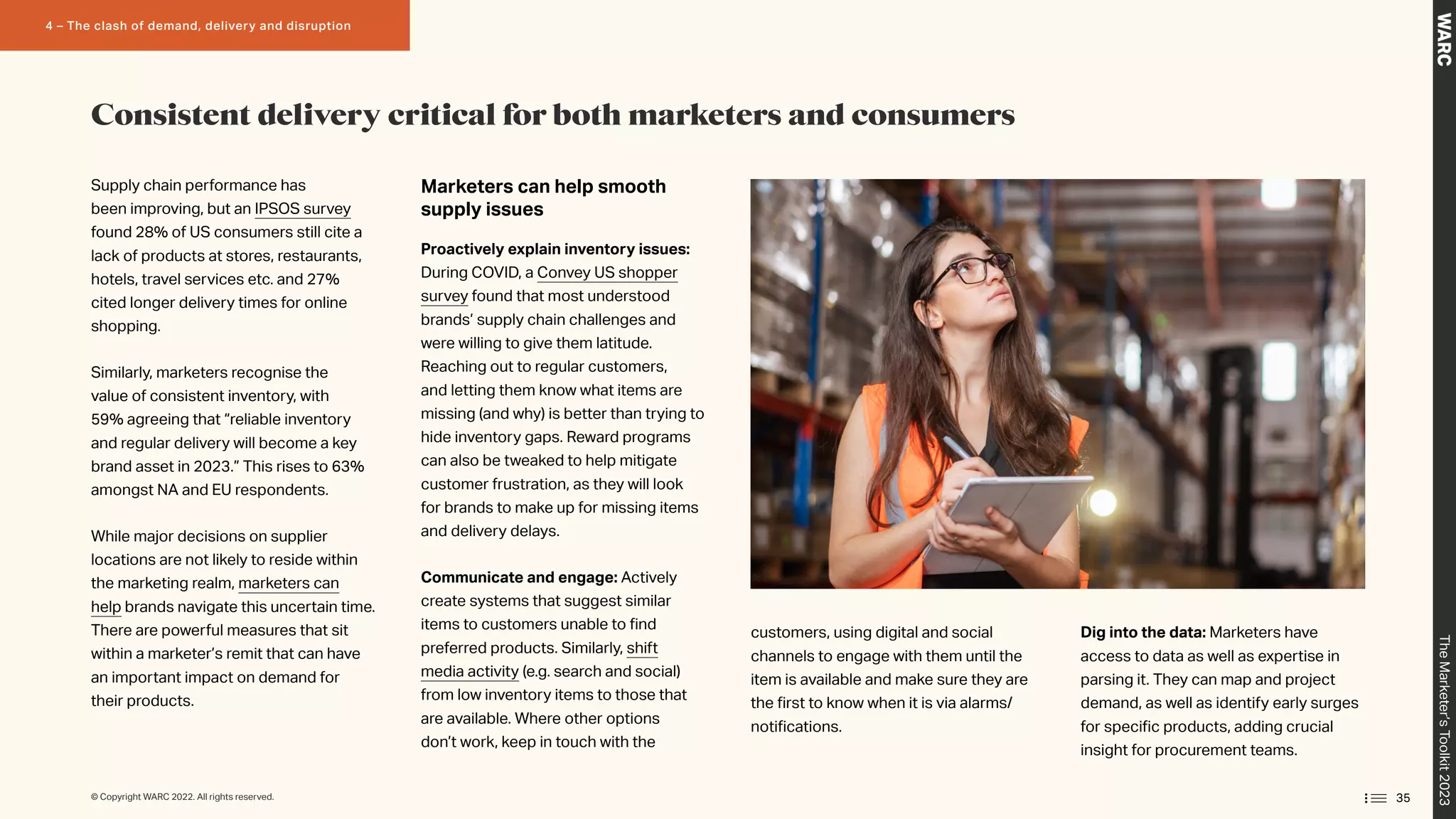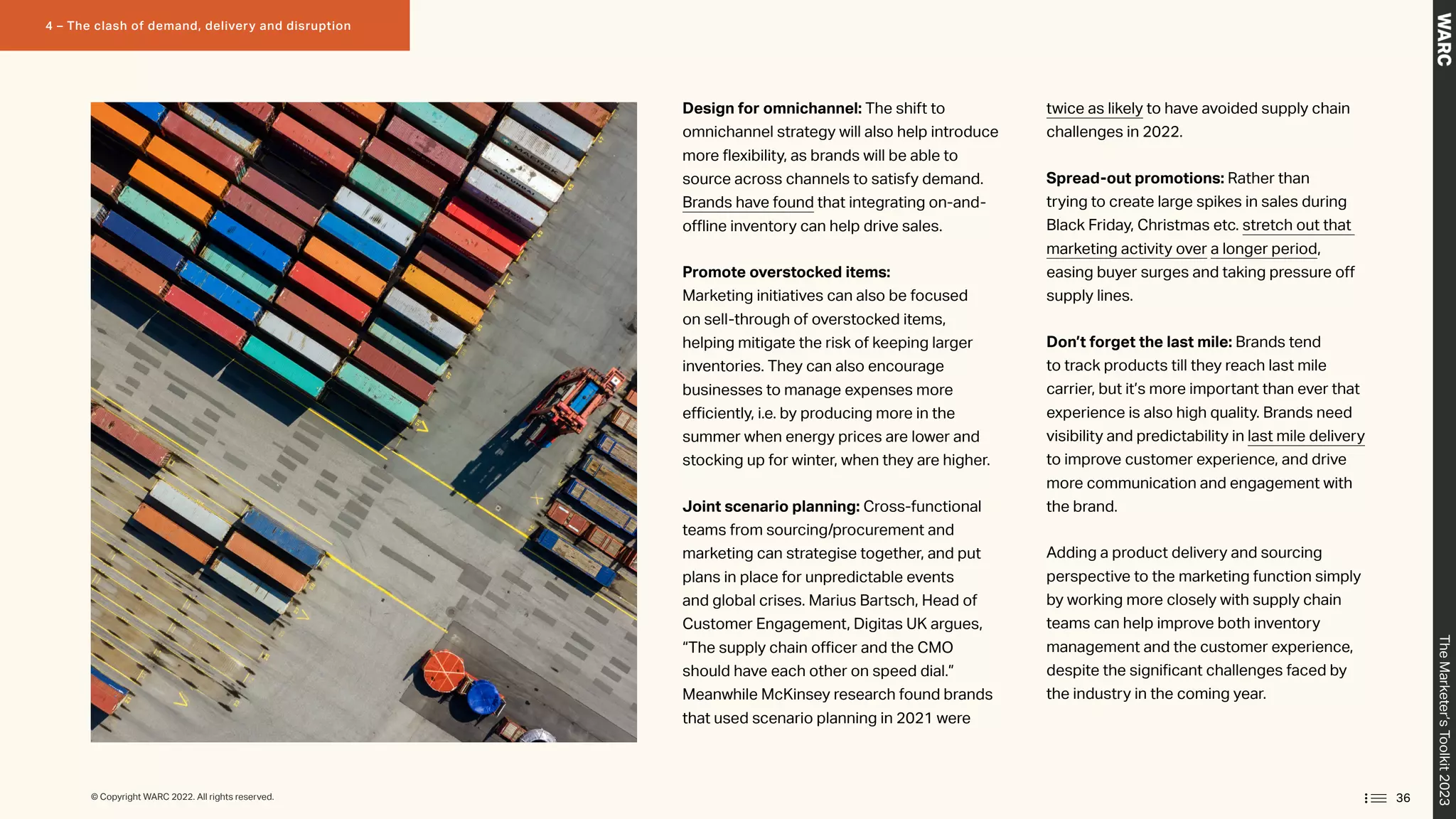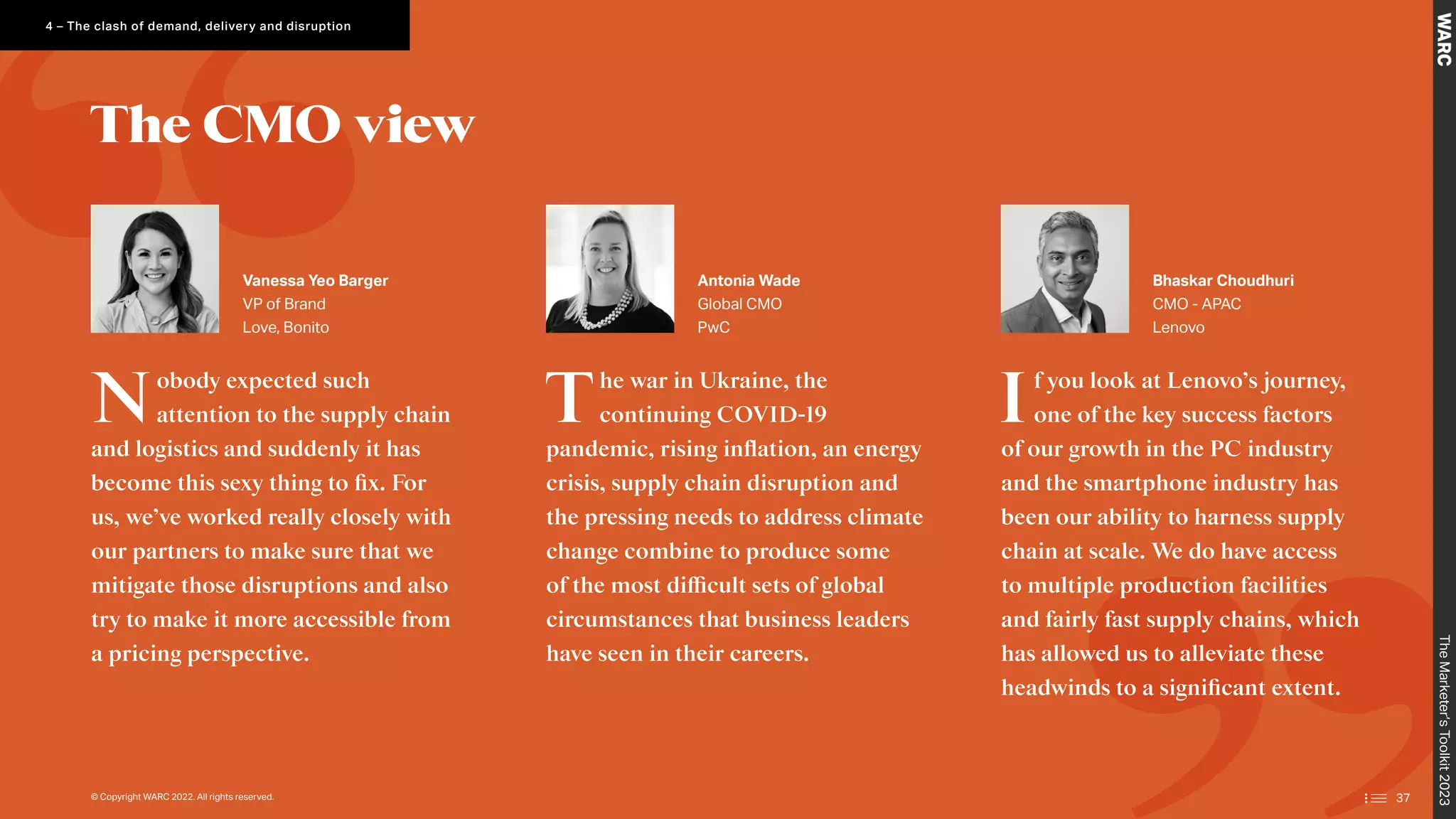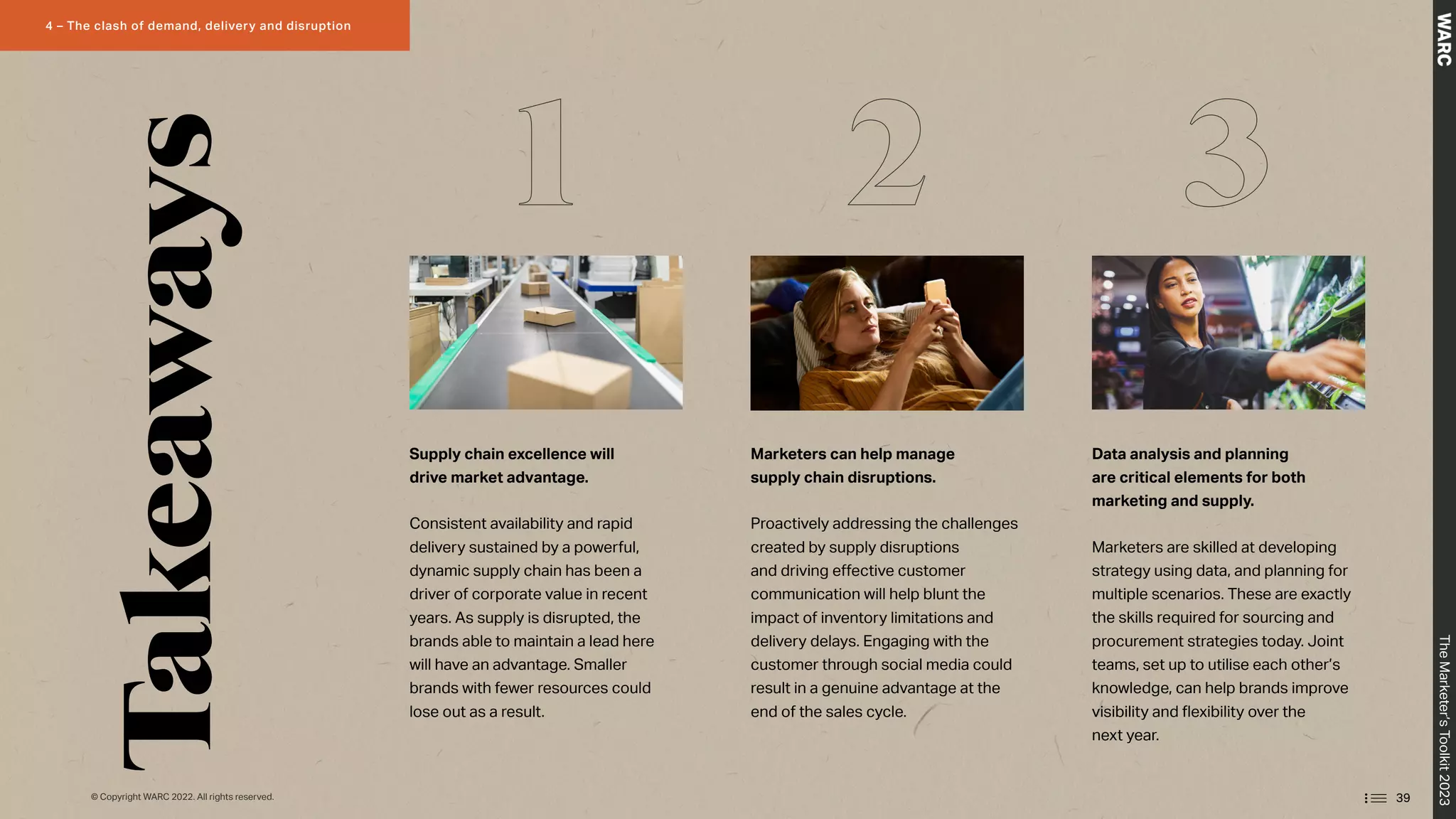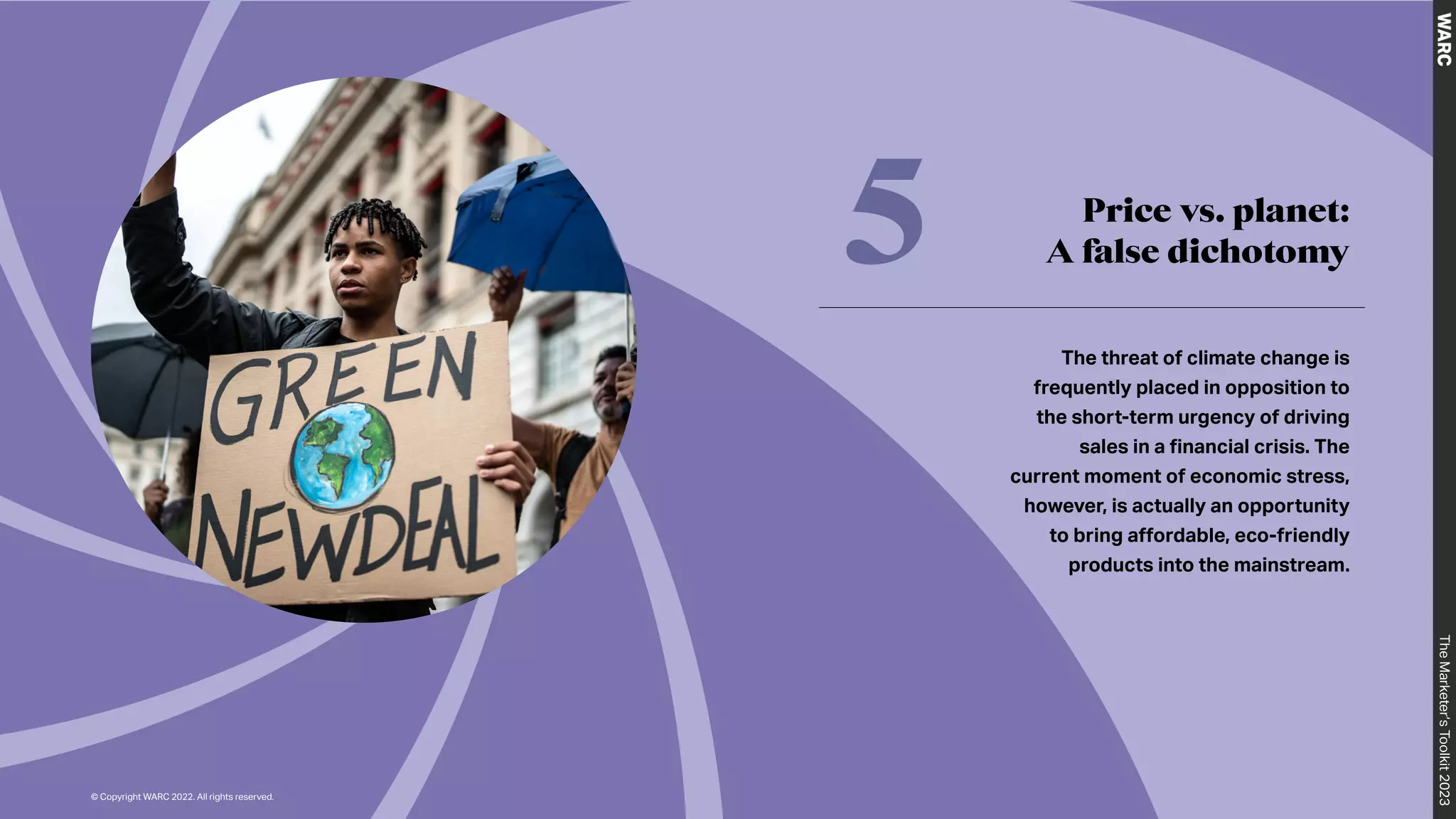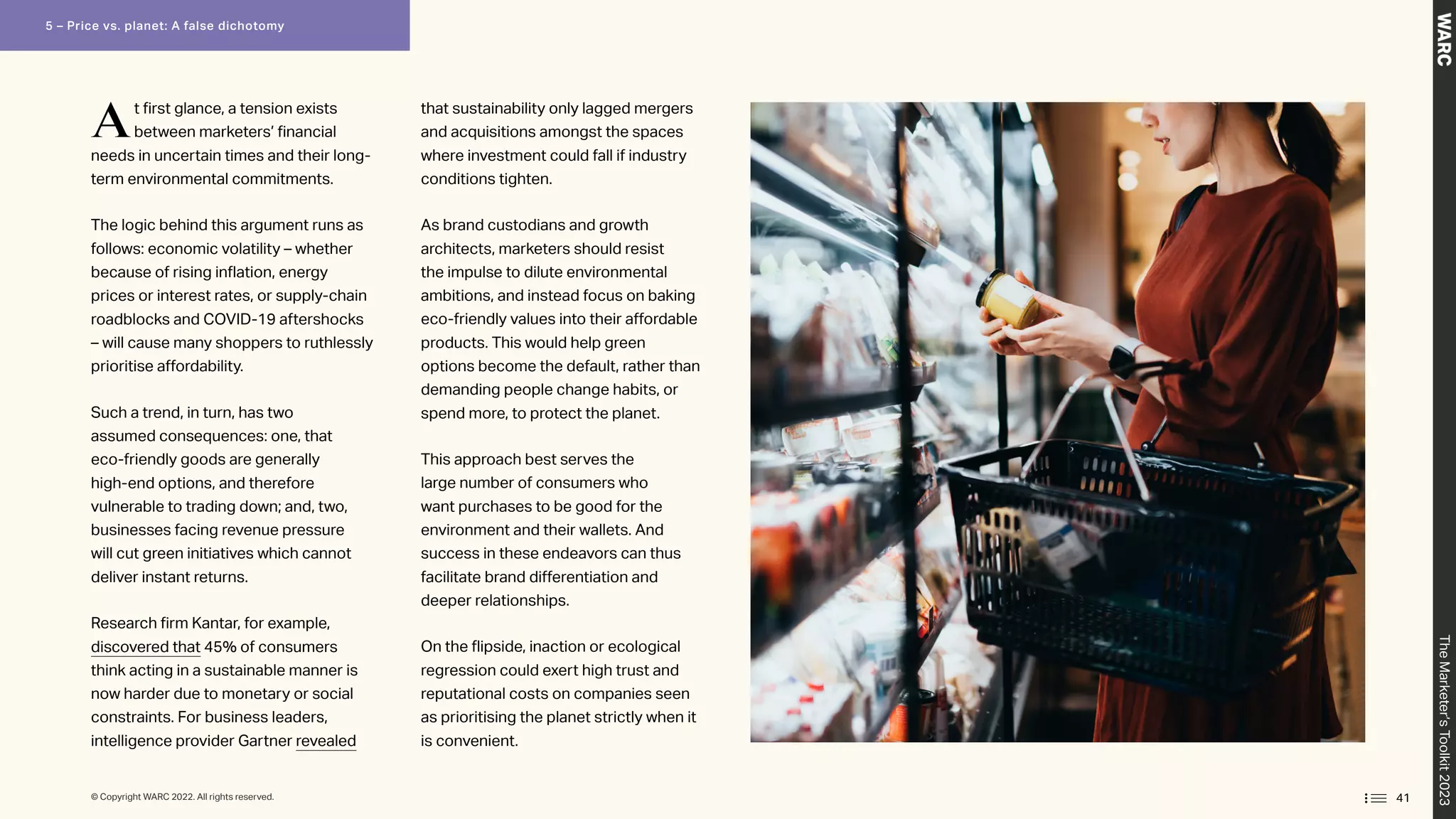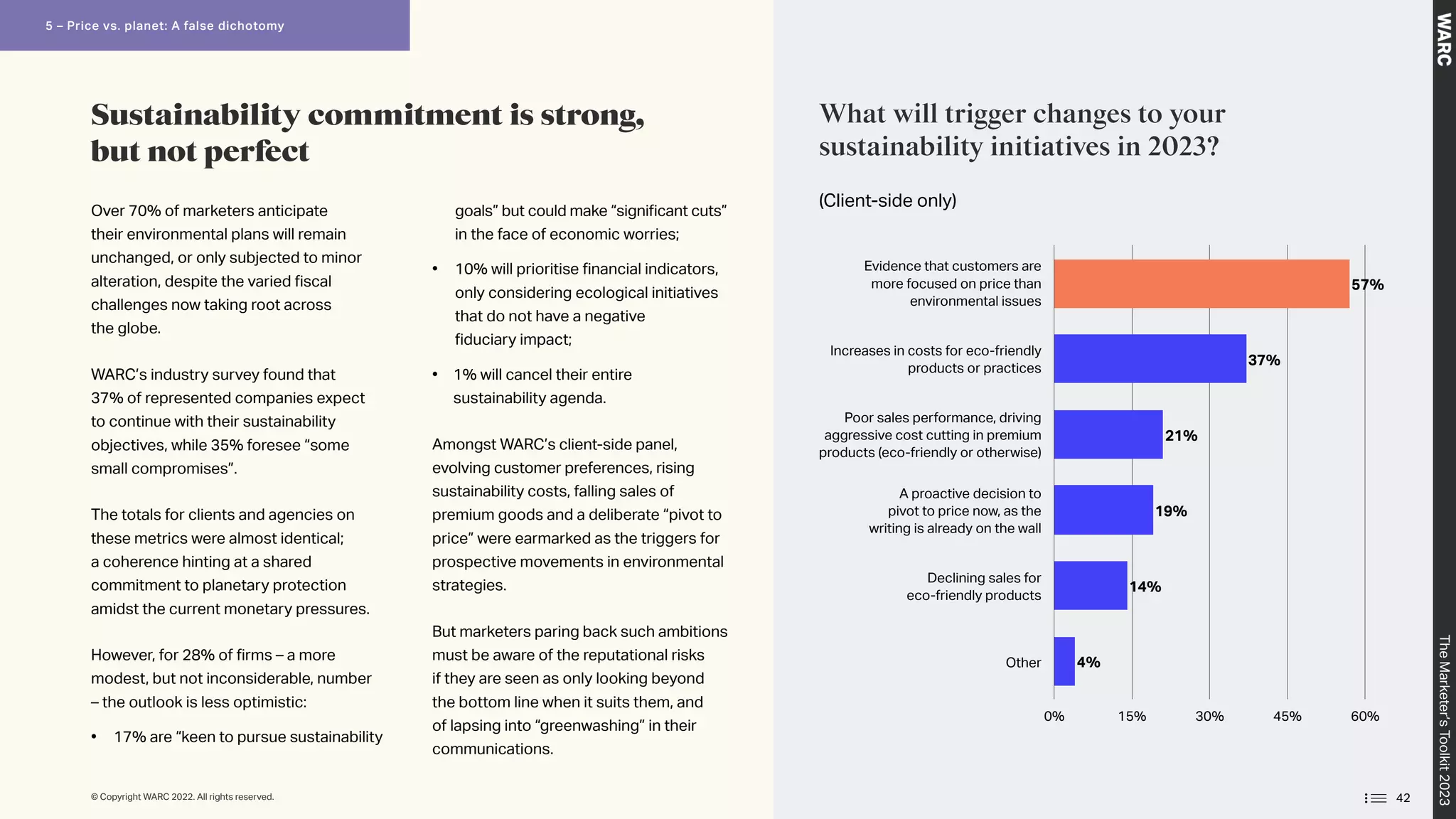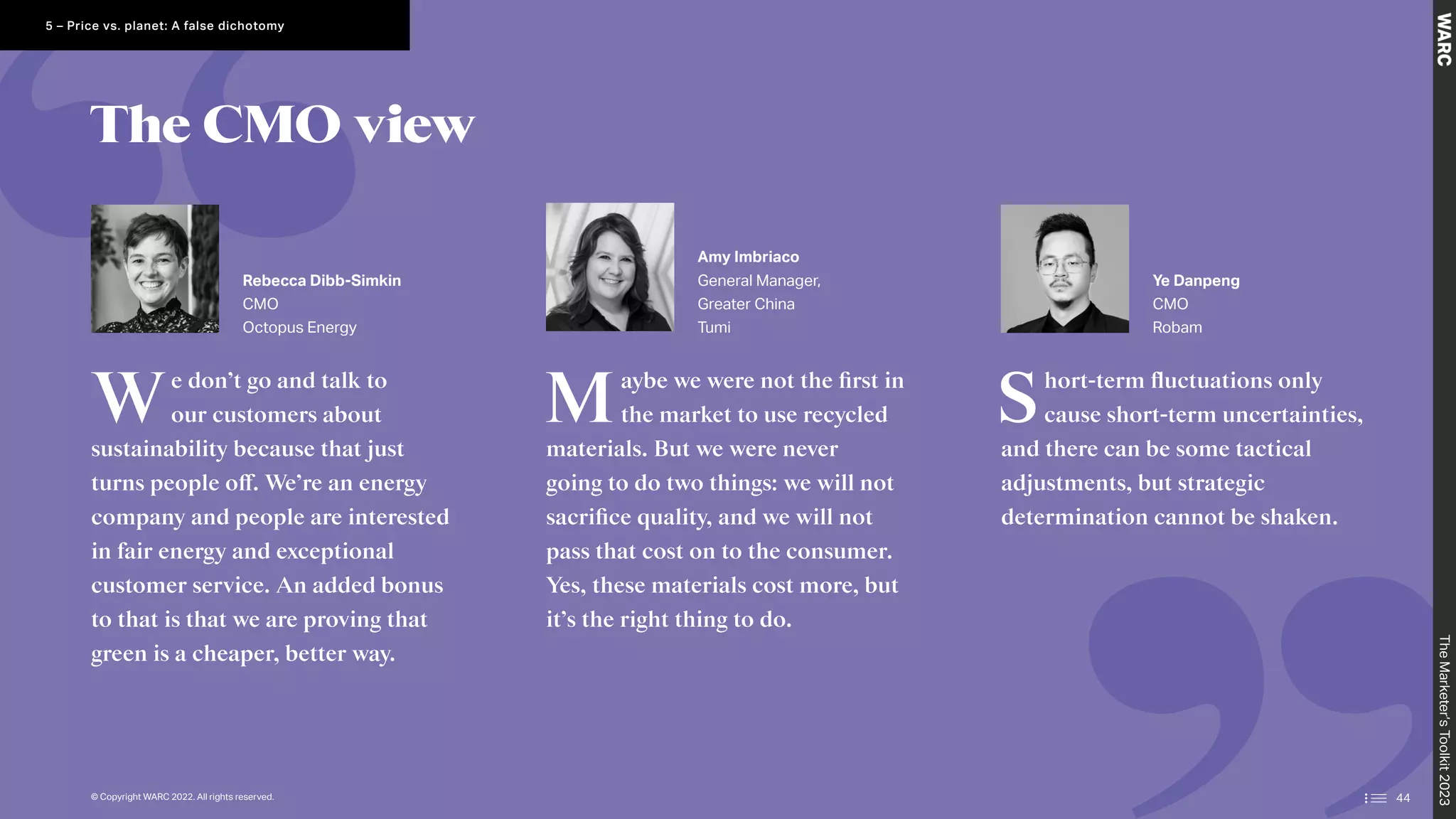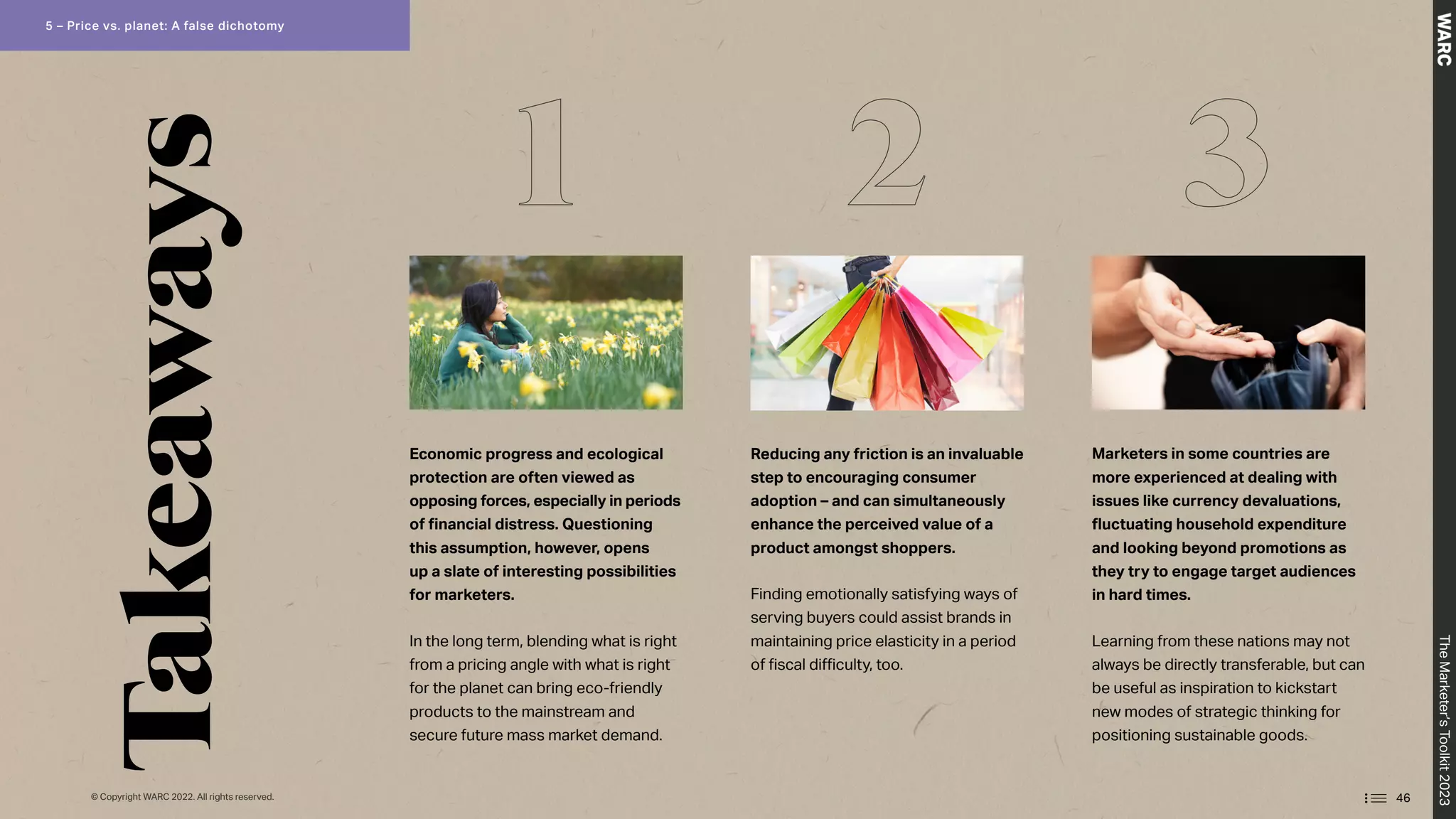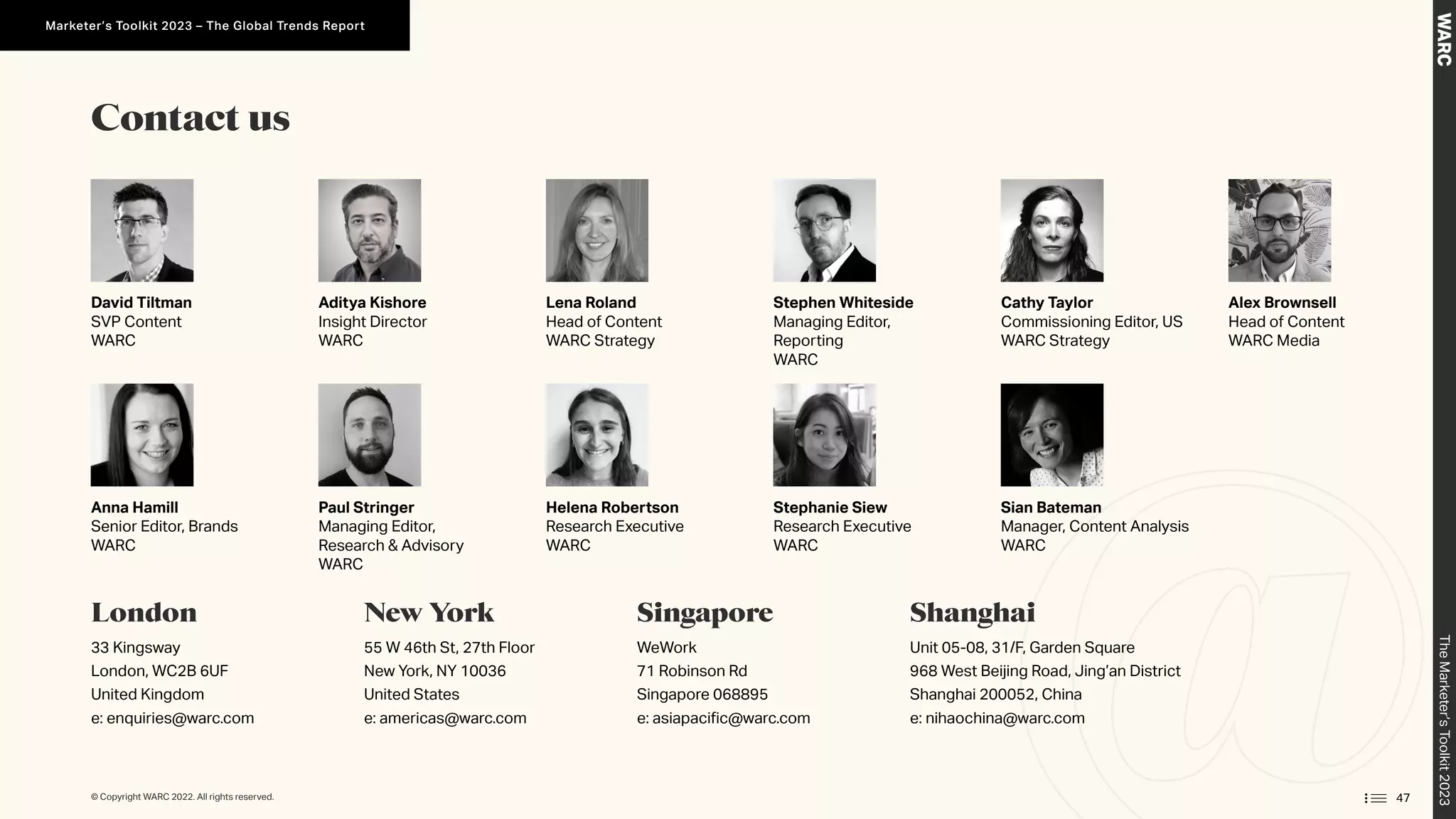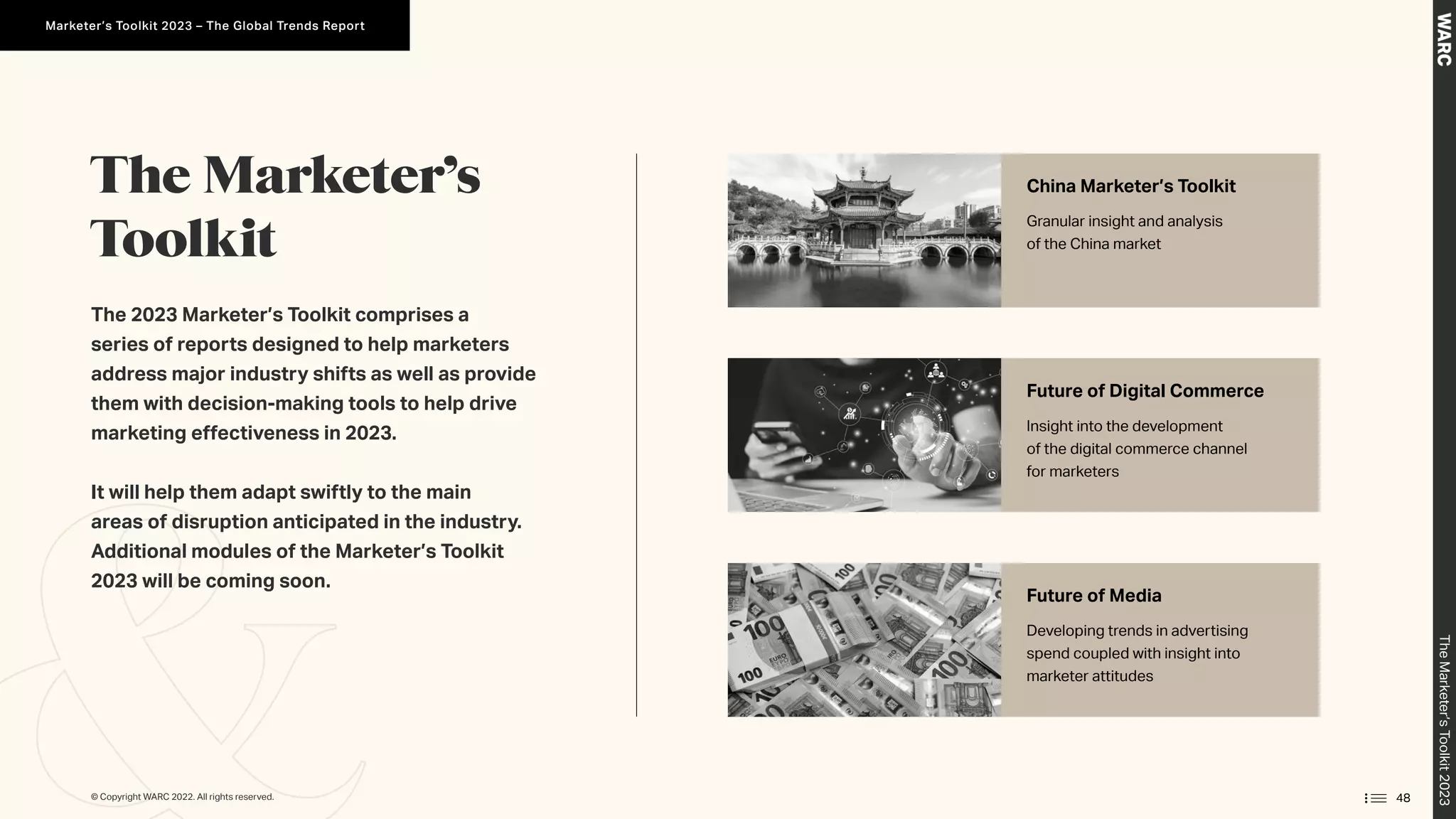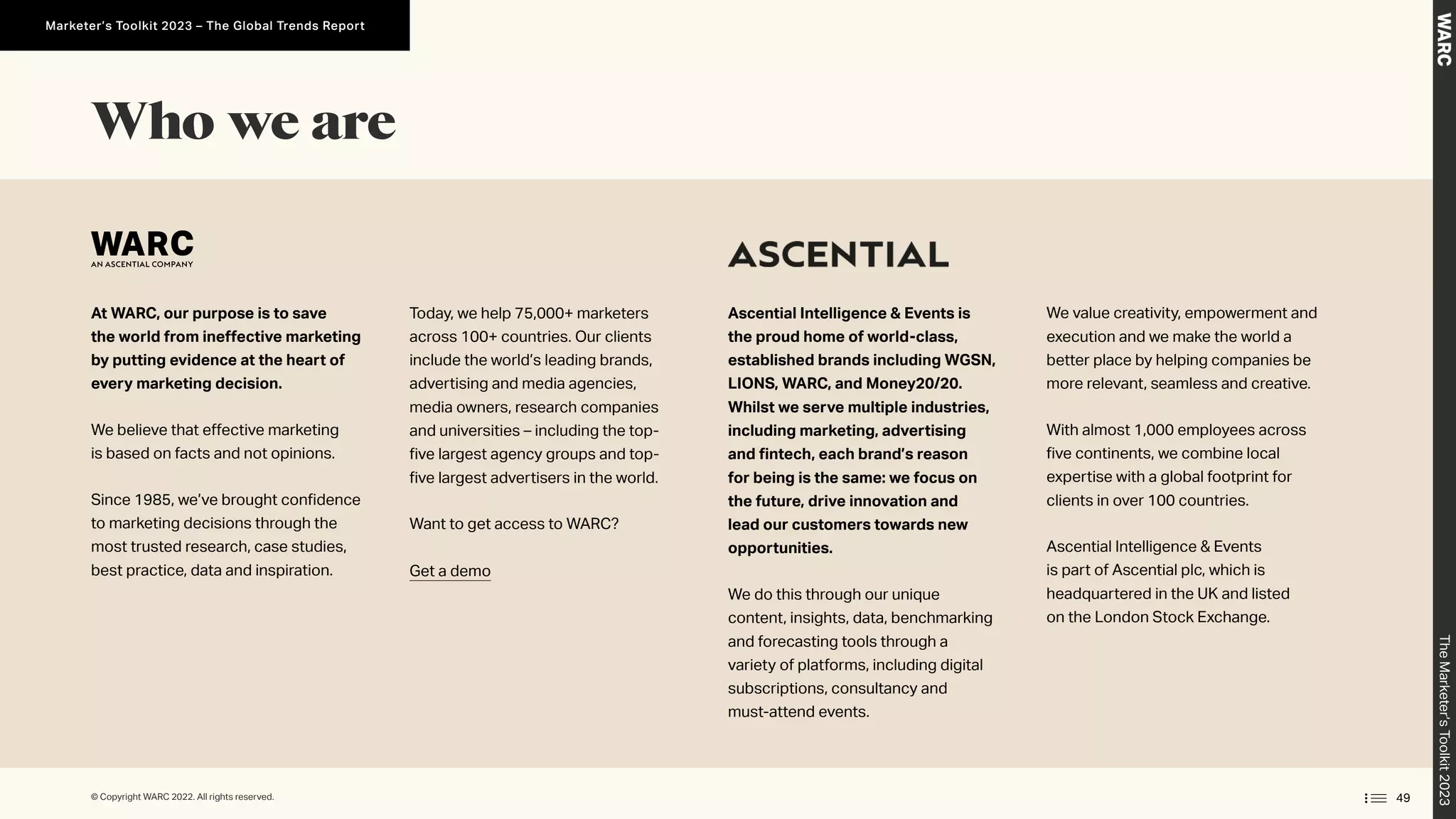The Marketer's Toolkit 2023 addresses the uncertain economic environment affecting global marketing, impacted by the war in Ukraine, inflation, and recession fears. A survey of over 1,700 marketers reveals a strong concern over economic challenges and emphasizes the importance of maintaining brand equity and adapting strategies amidst shifting consumer behaviors. The report identifies key trends such as the need for sustainable practices, managing disruption in supply chains, and navigating the changes in marketing dynamics due to a cost-of-living crisis.
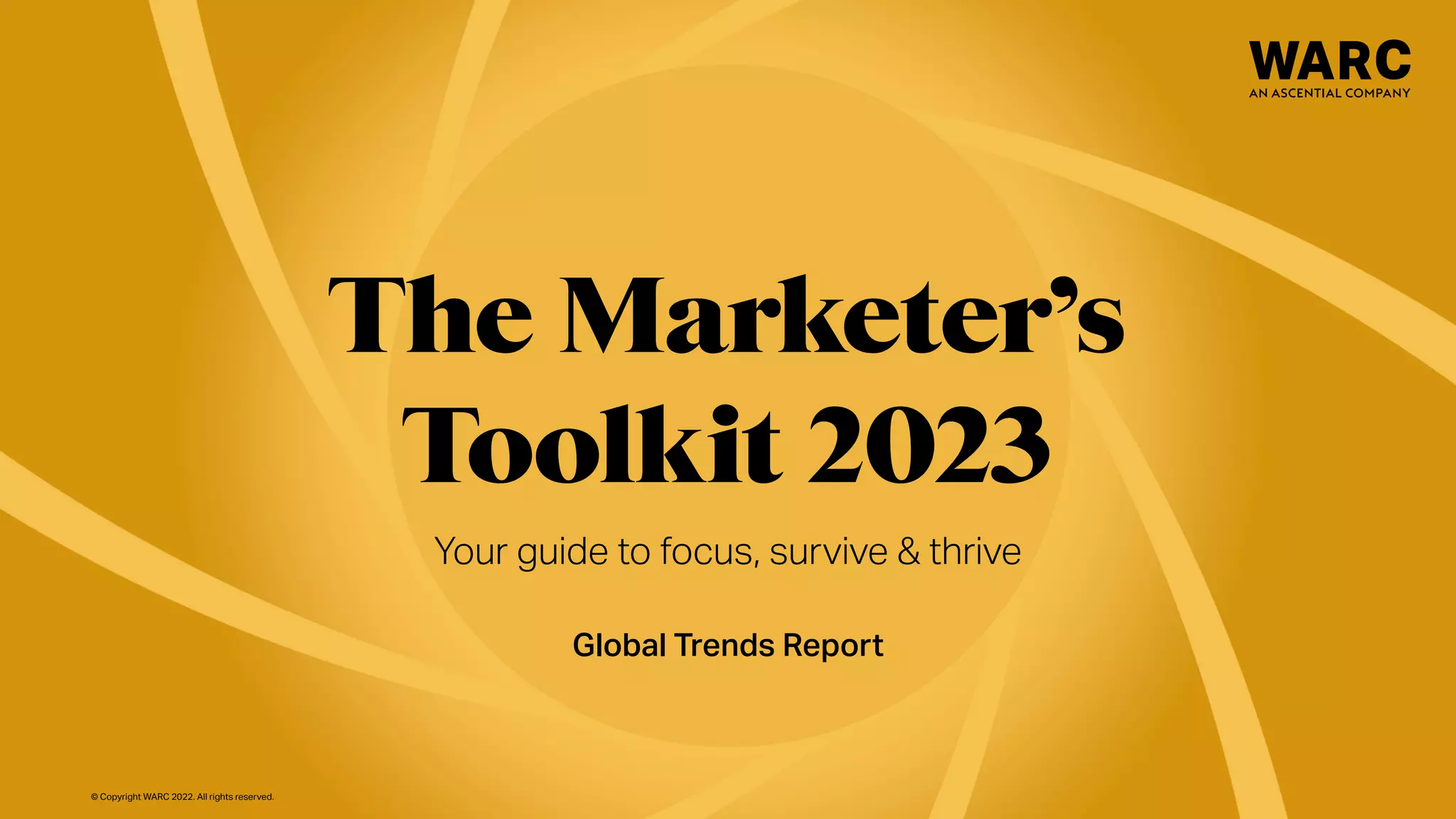
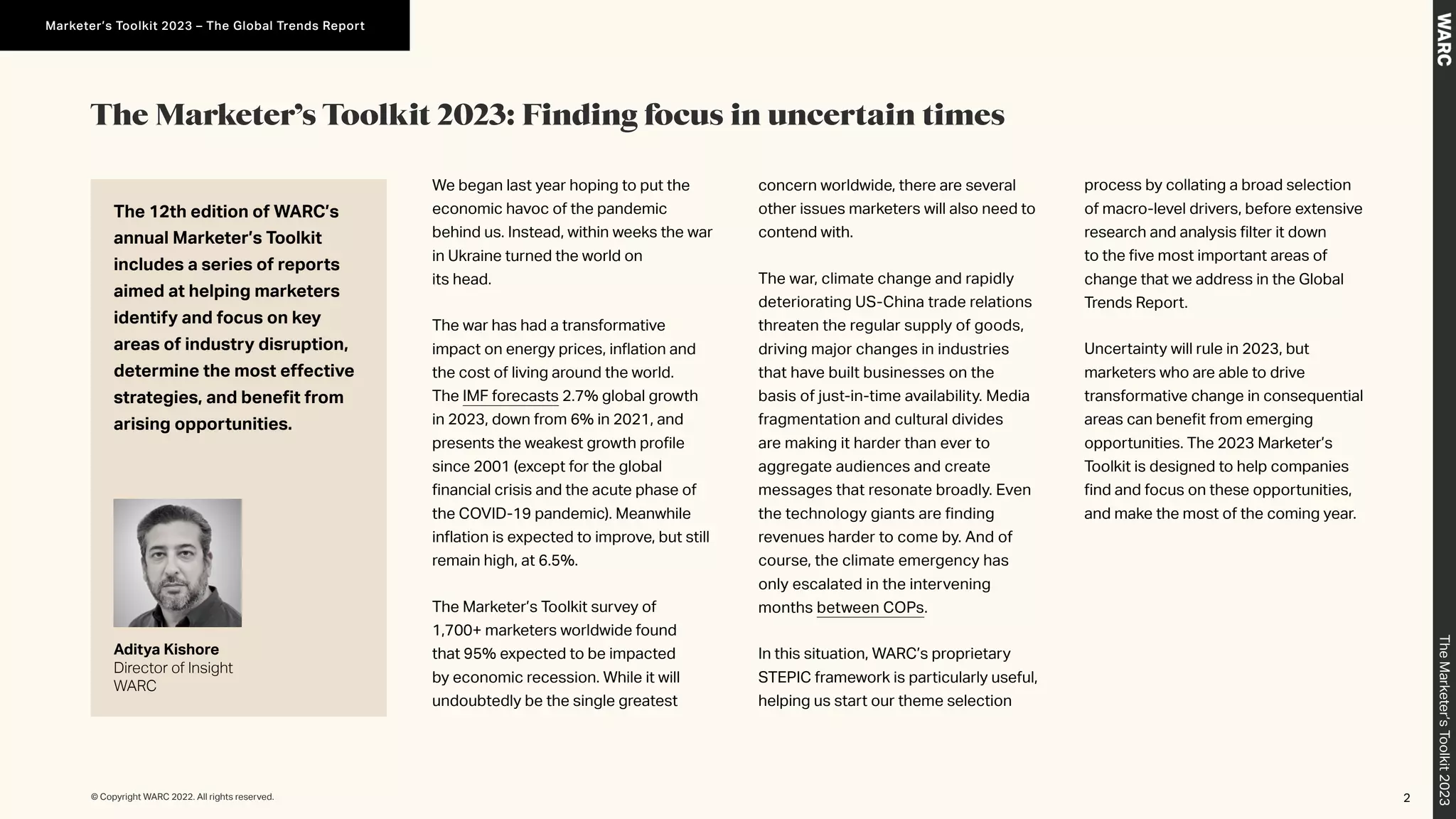
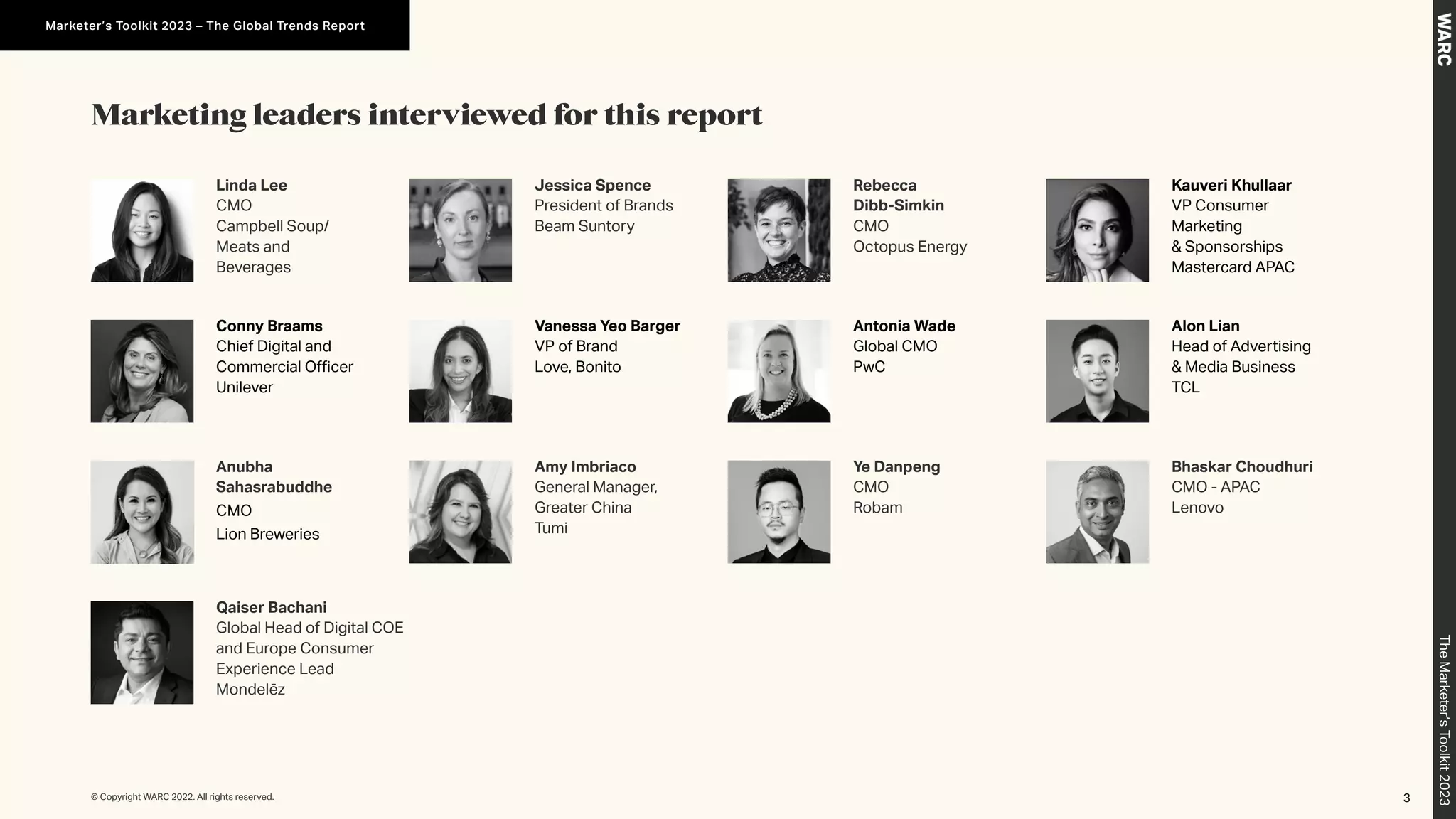
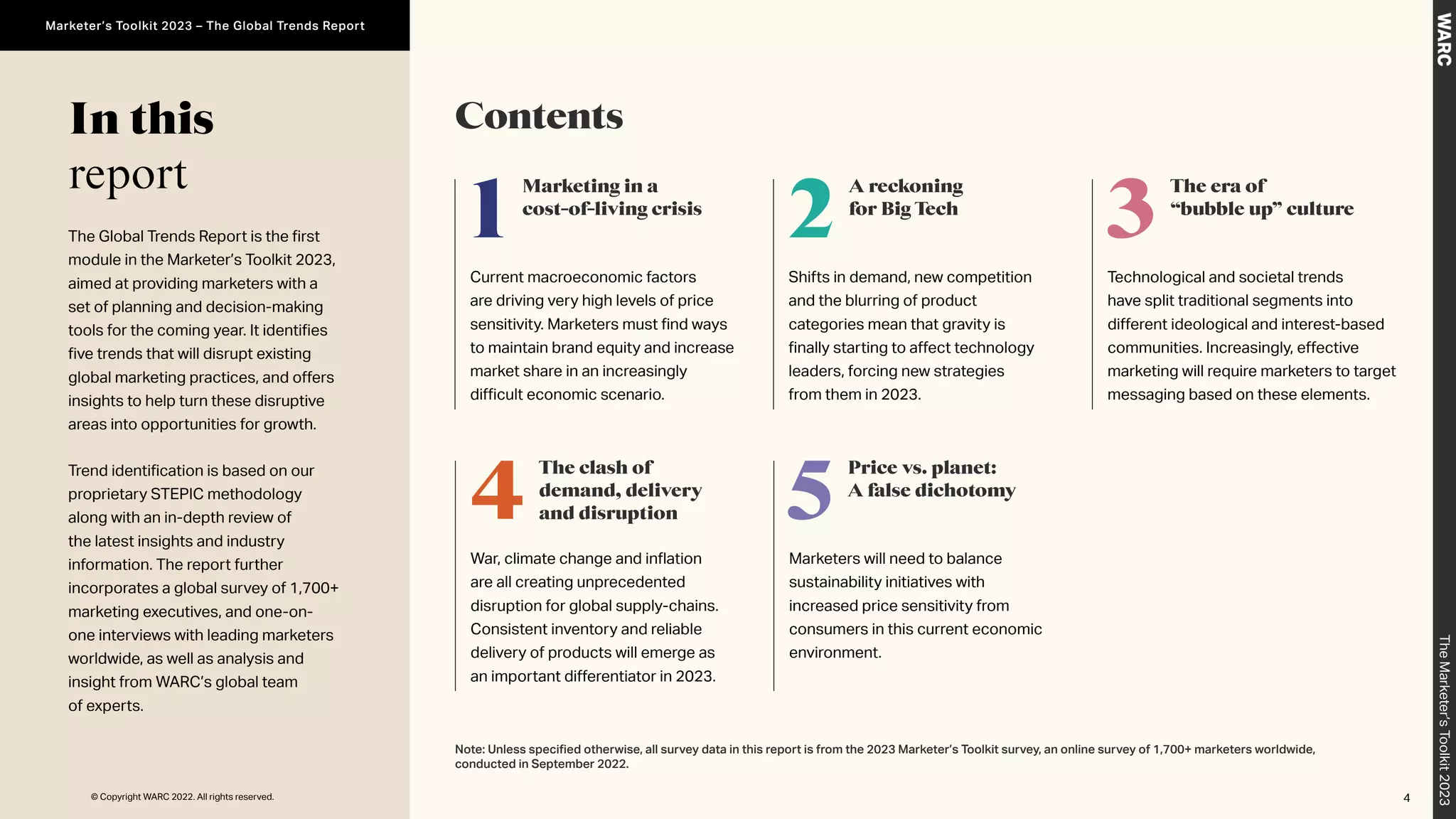
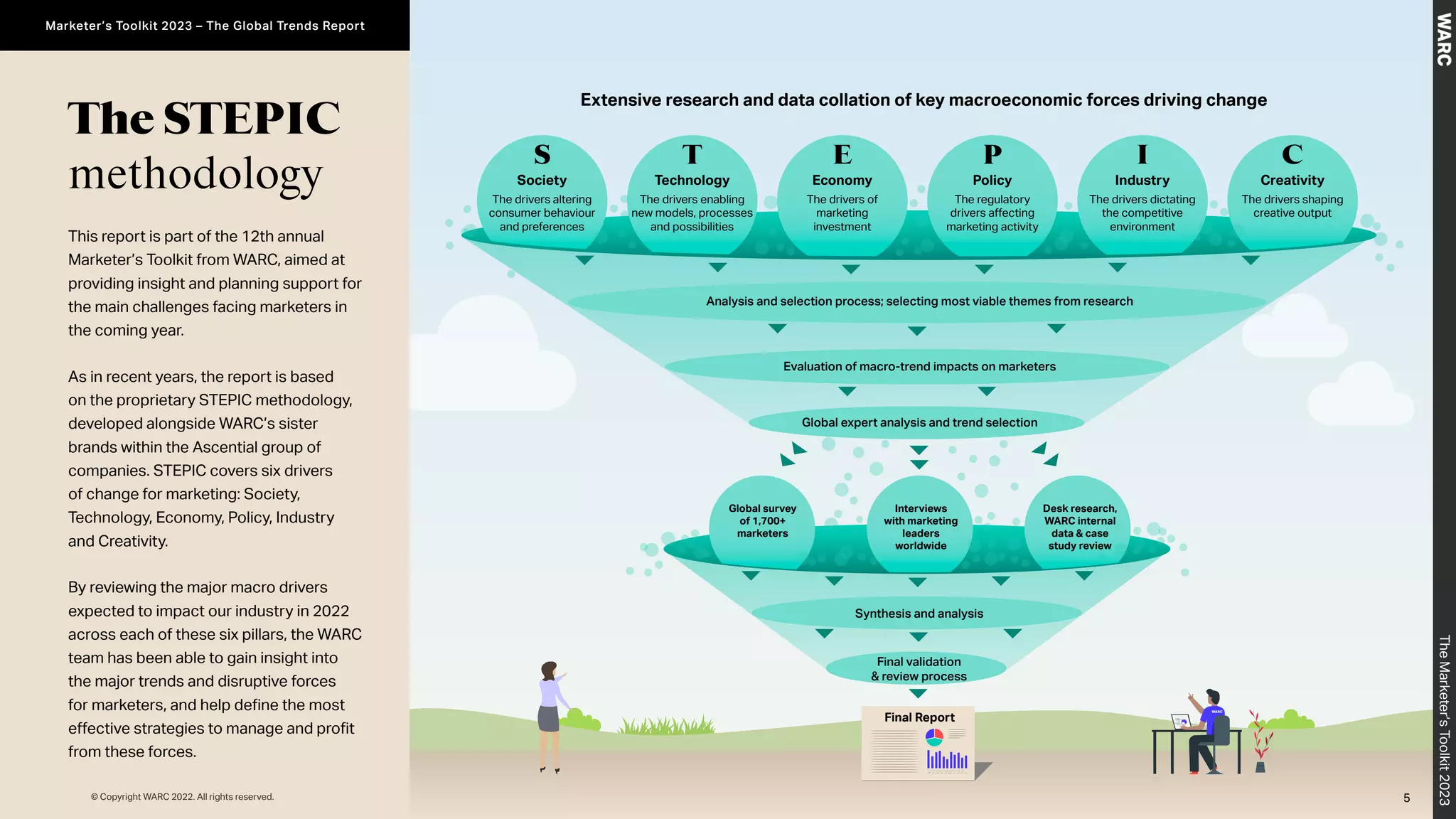
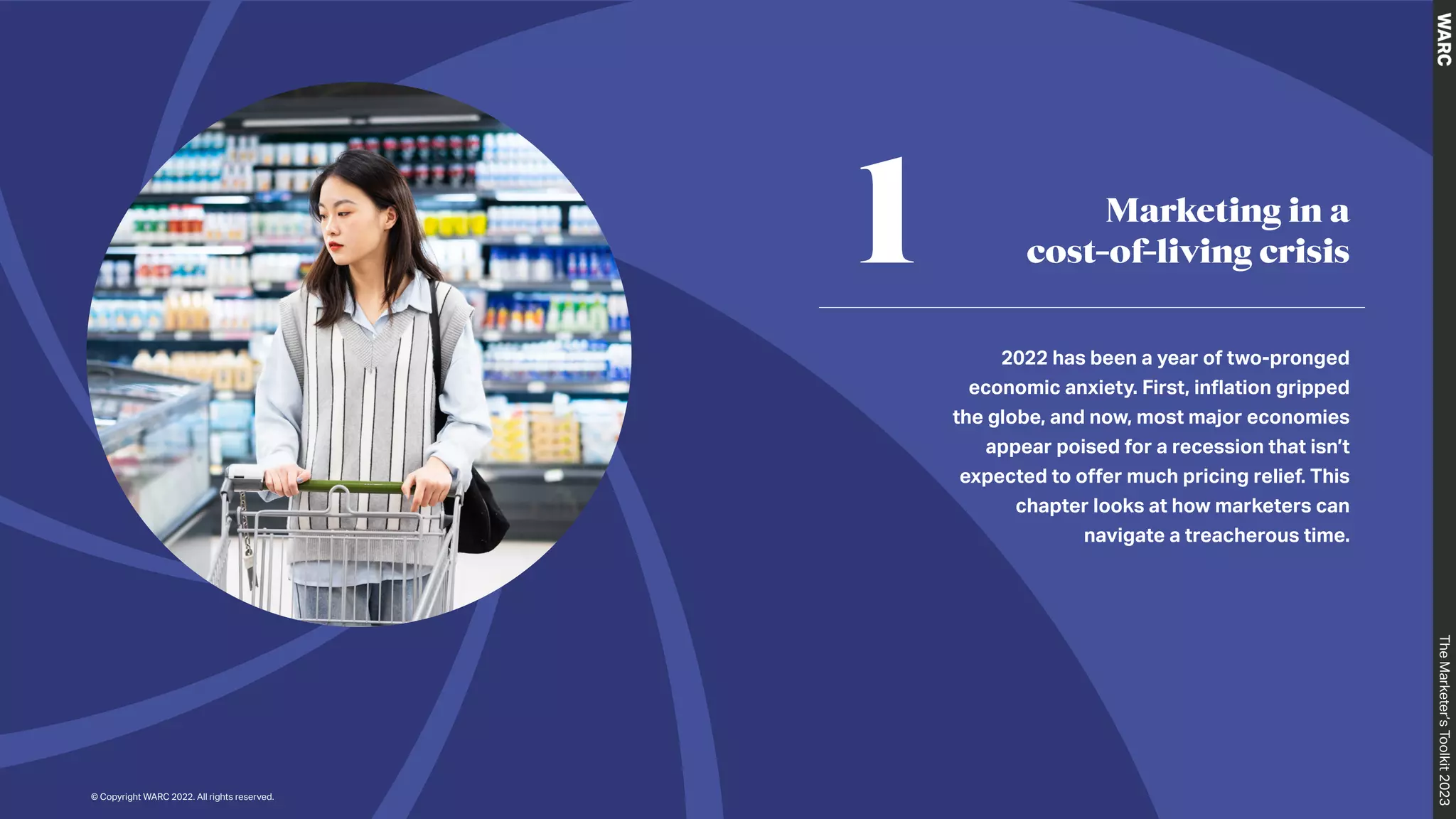
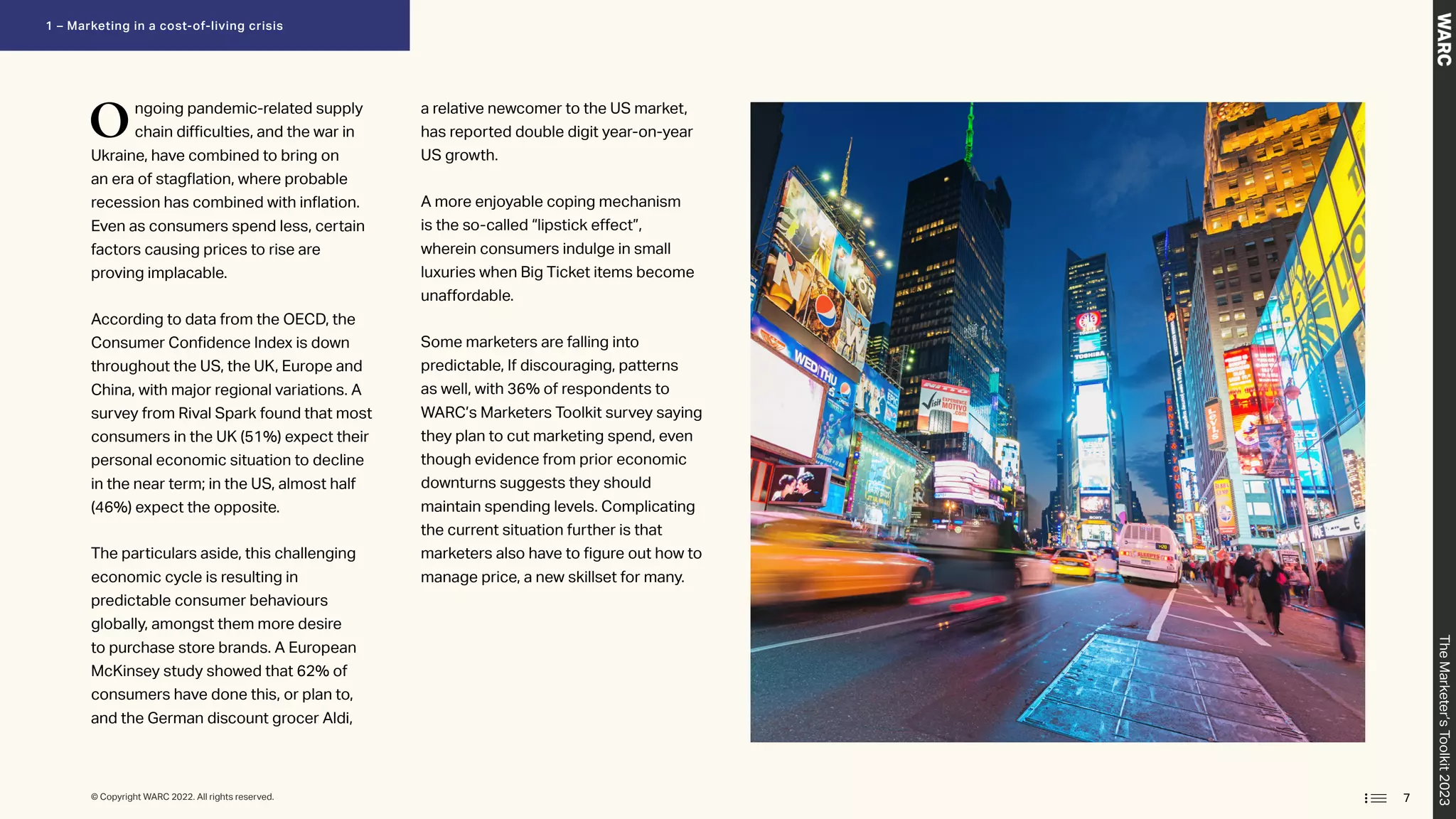
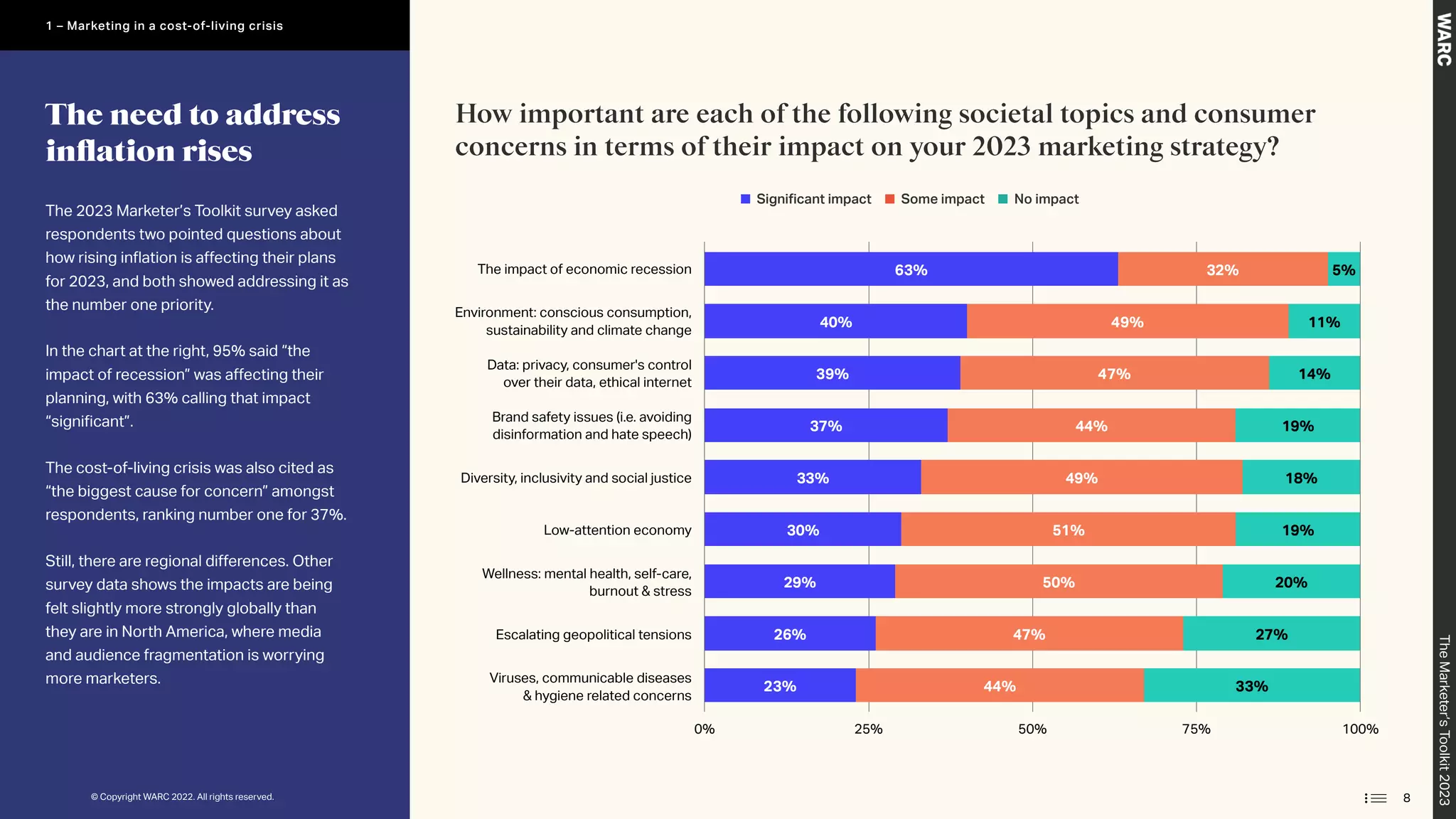

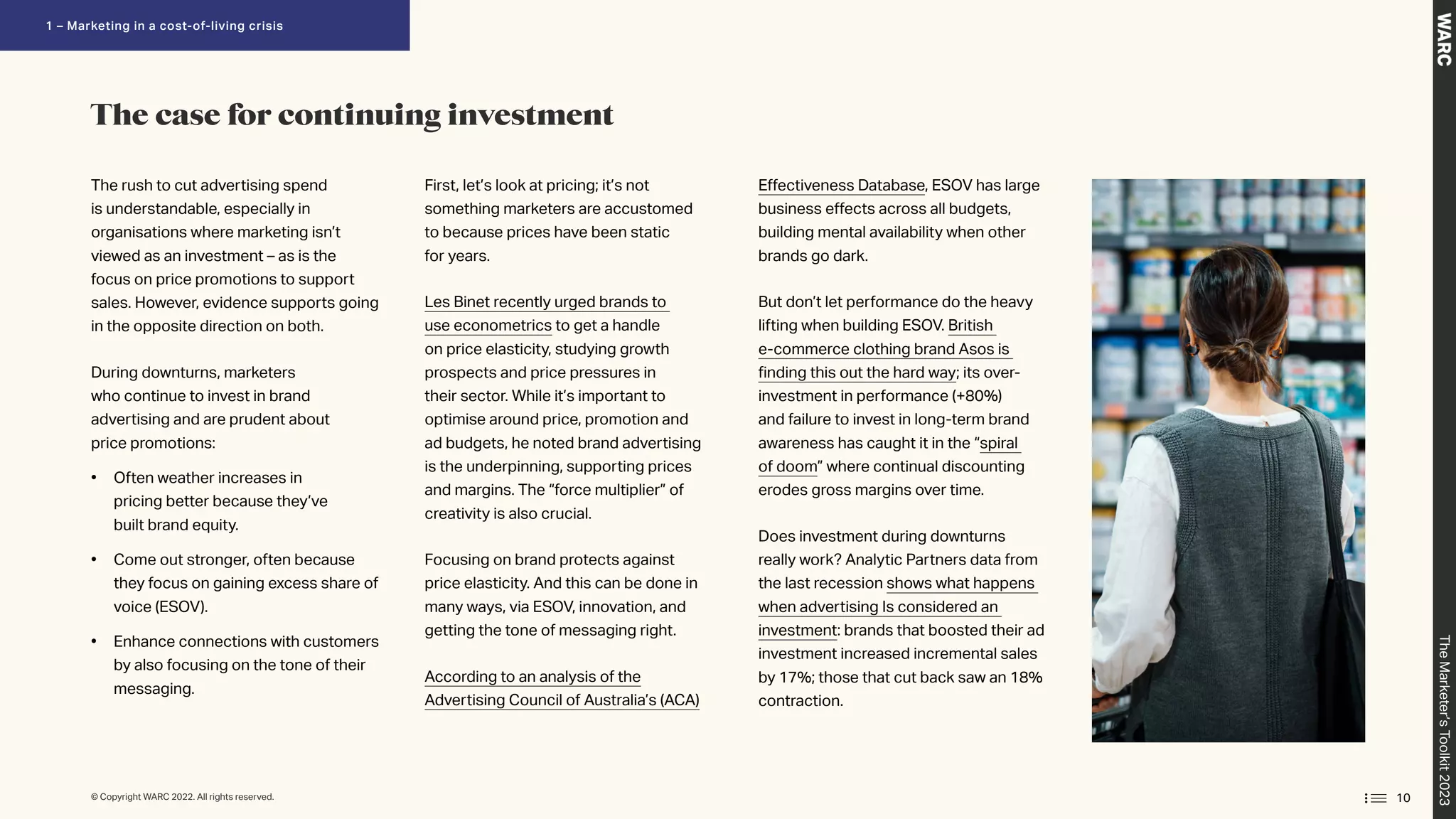
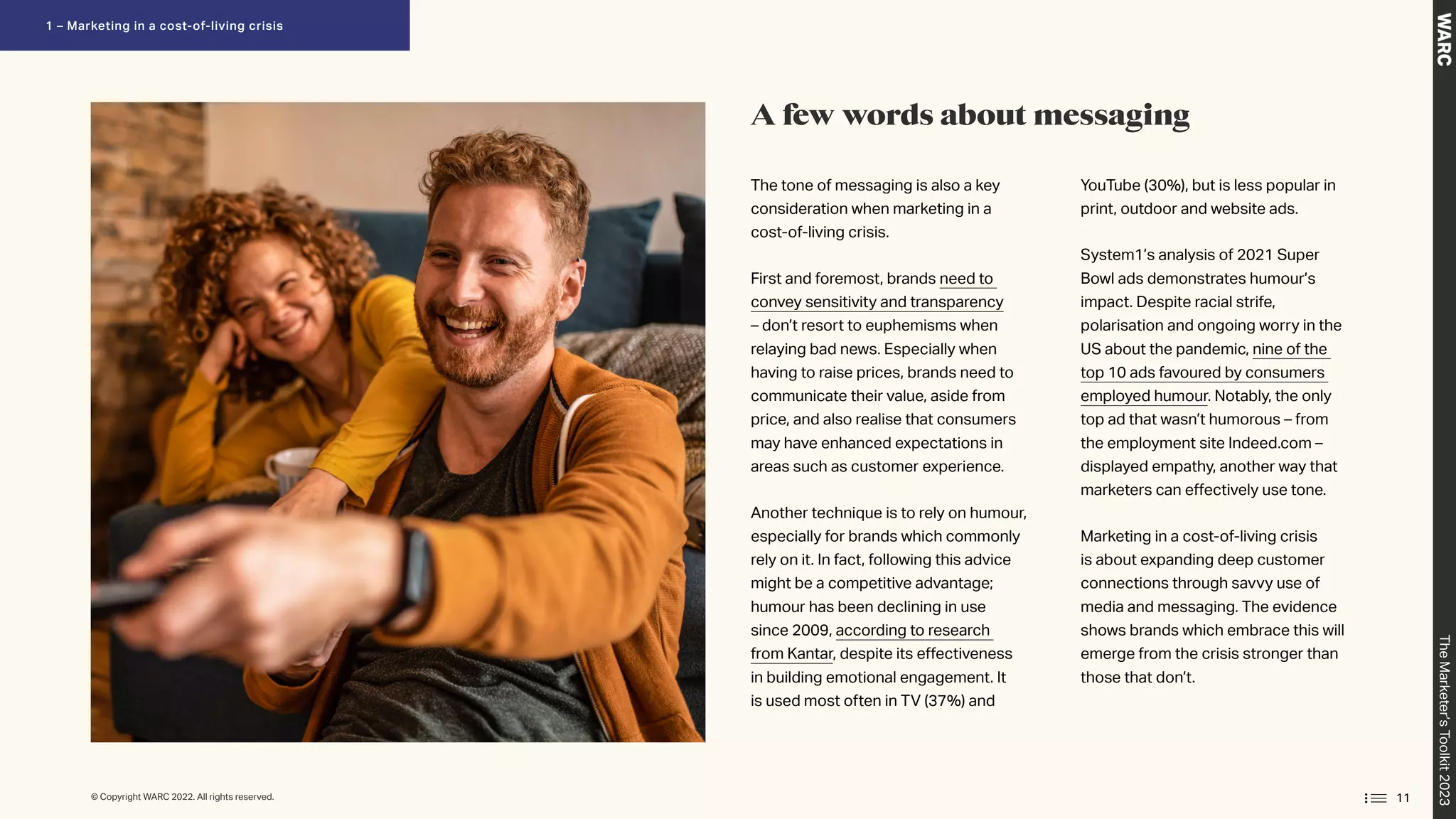
![The recession is real. That’s
something that’s led to a new
effort on our end around value,
marketing and messaging. At a time
like this, it’s important to not cut
back on our marketing … [and] lean
in, not just to market; it’s to lean into
how we can help our consumers.
We are seeing a much sharper
downturn in consumer
confidence across Western Europe
than we are in the US. You have to
be constantly pushing to understand
what people are experiencing. As we
saw through the pandemic, people
were very choiceful about where they
spent their money.
In these inflationary times, where
you are fighting for every other
… dollar that a consumer spends,
consumers will always prefer brands
that have strong equity. There might
be a small dip or small growth, but
the preference will always be to go
for the known brand and brands that
have been consistent in the past.
Linda Lee
CMO
Campbell Soup/Meats
and Beverages
Jessica Spence
President of Brands
Beam Suntory
Qaiser Bachani
Global Head of Digital COE
and Europe Consumer
Experience Lead
Mondelēz
The CMO view
The
Marketer’s
Toolkit
2023
1 – Marketing in a cost-of-living crisis
© Copyright WARC 2022. All rights reserved. 12](https://image.slidesharecdn.com/warc-marketerstoolkit2023-221230043108-5e495464/75/Warc-Marketers-Toolkit-2023-pdf-12-2048.jpg)
